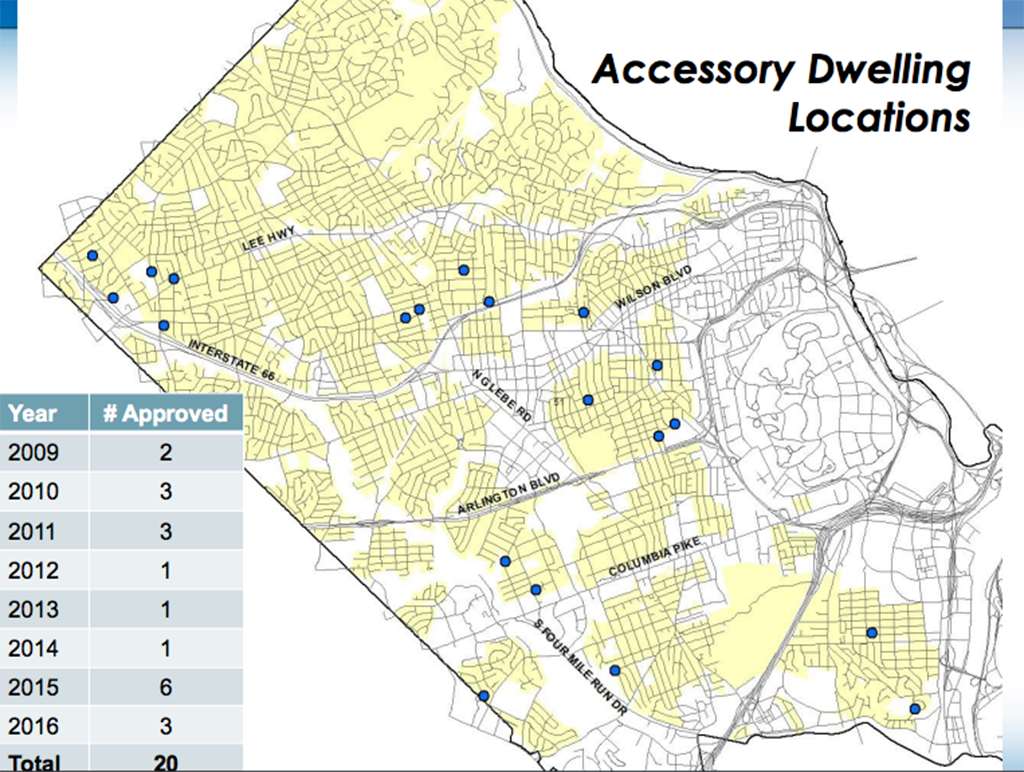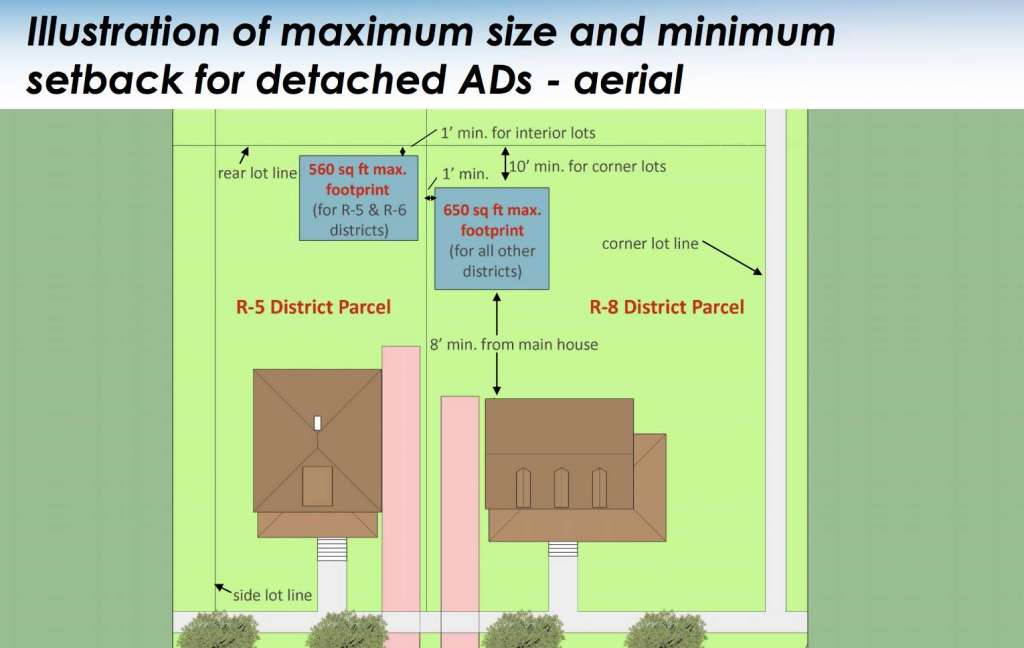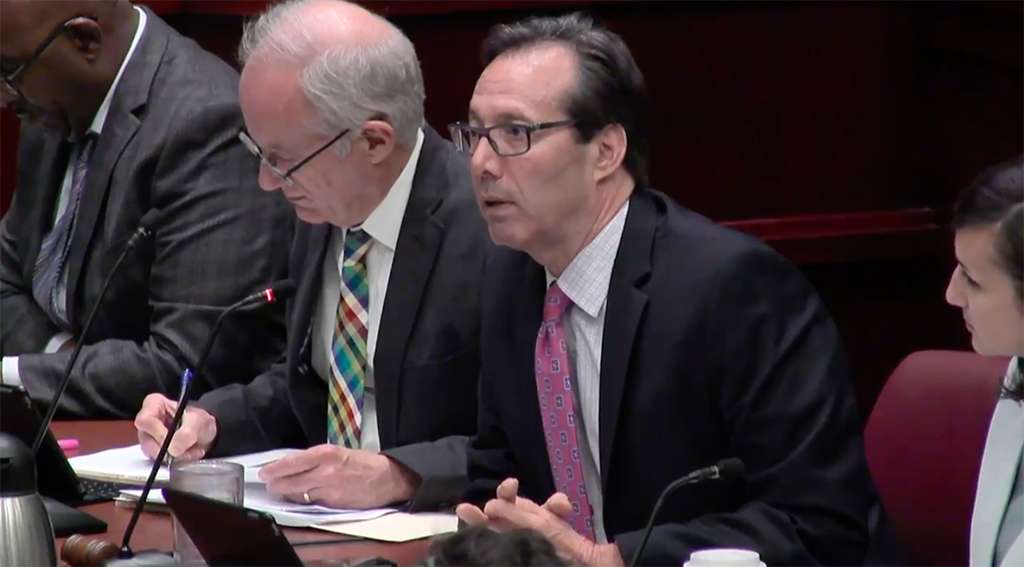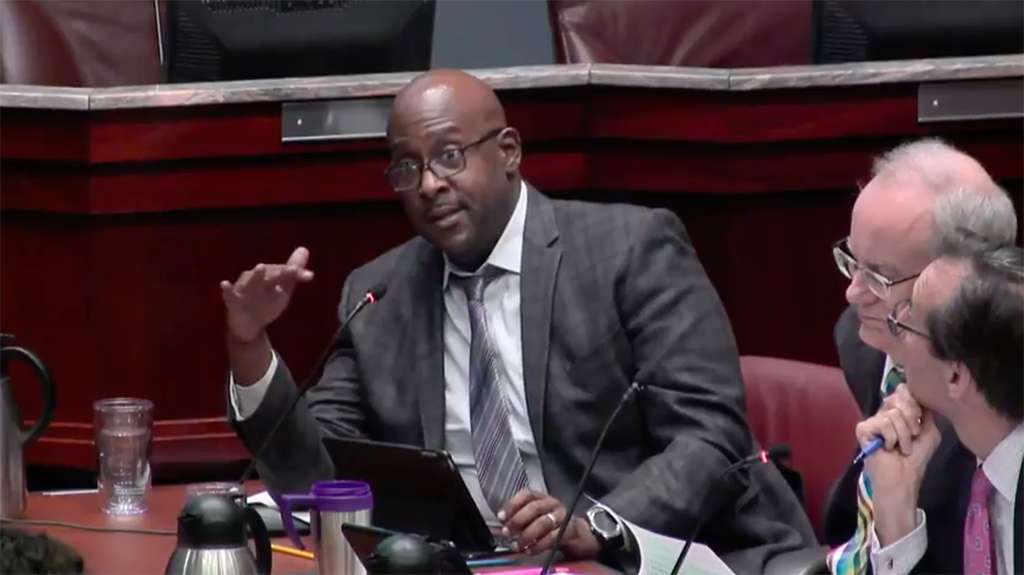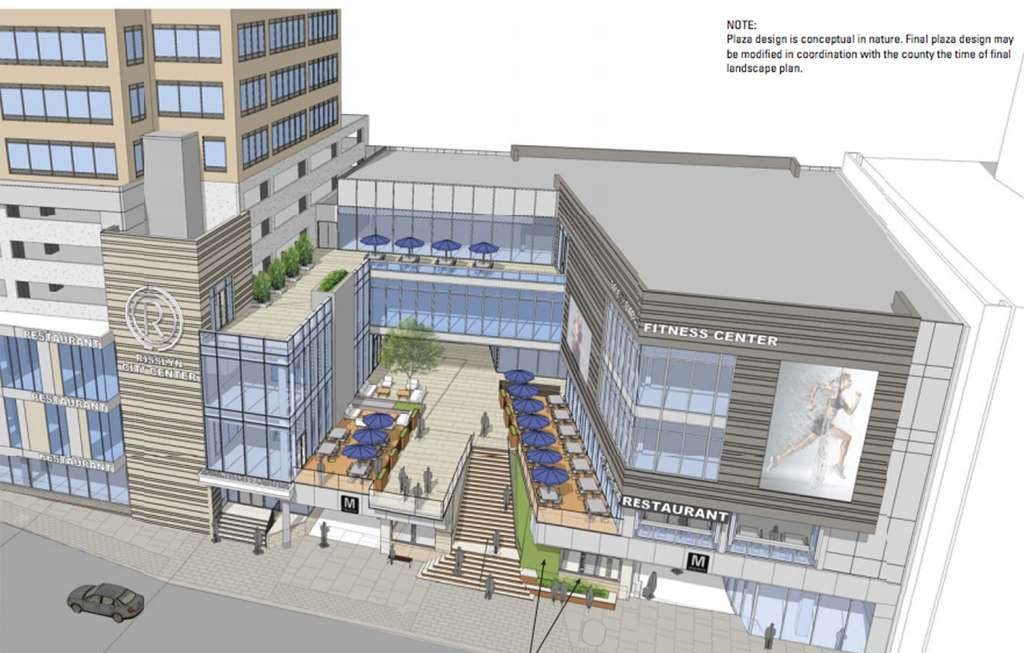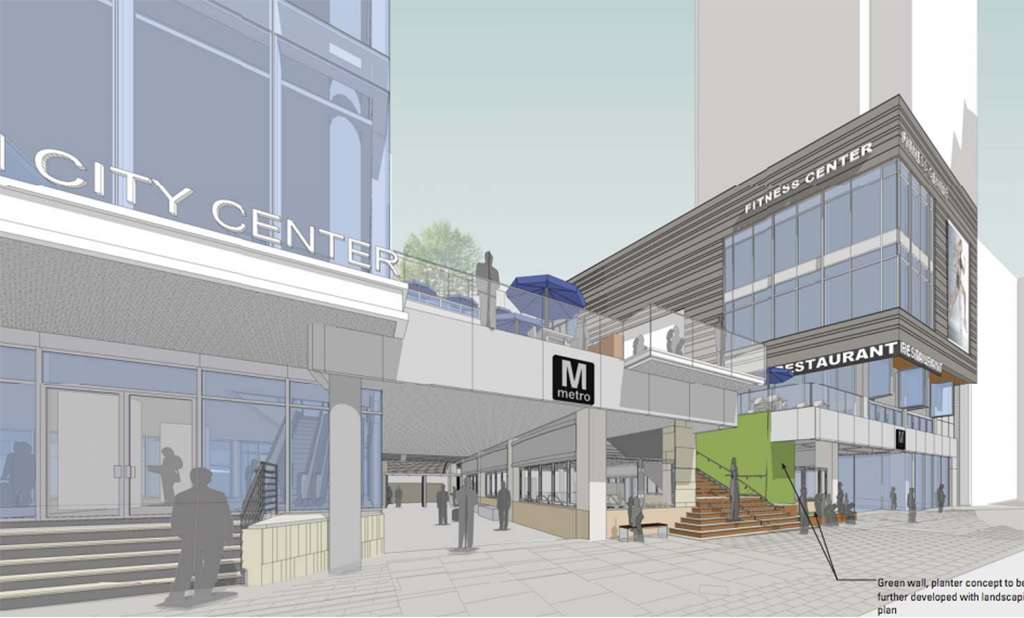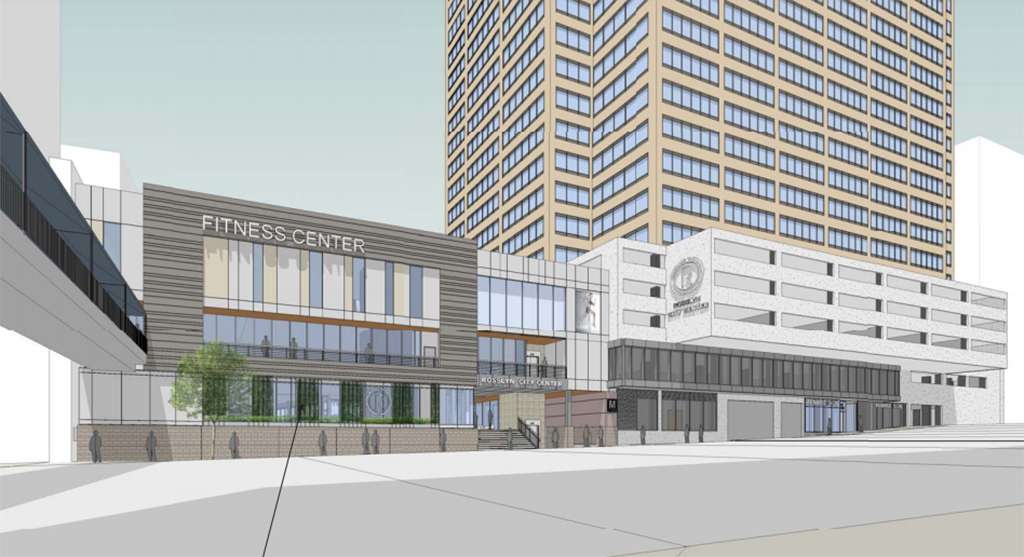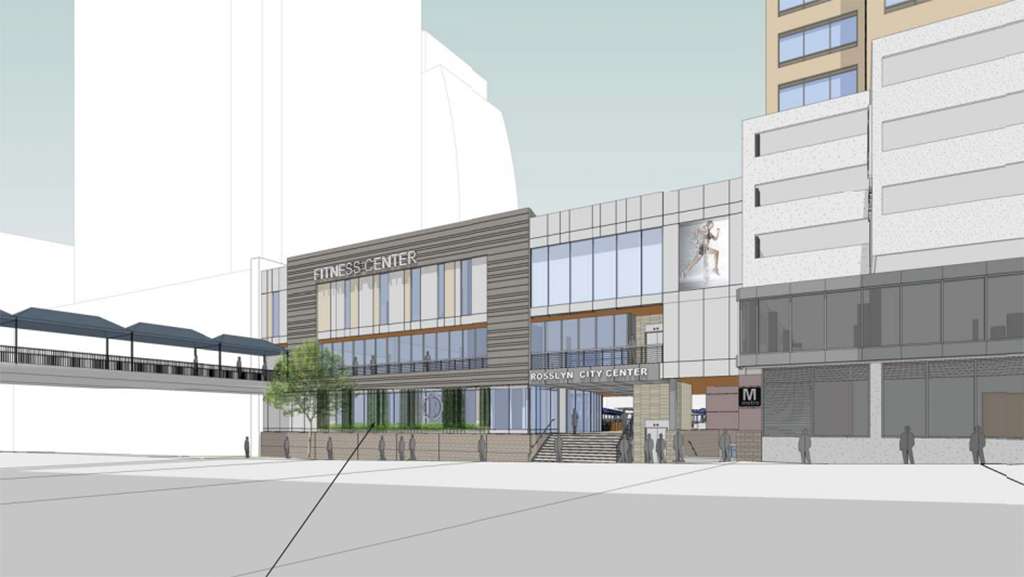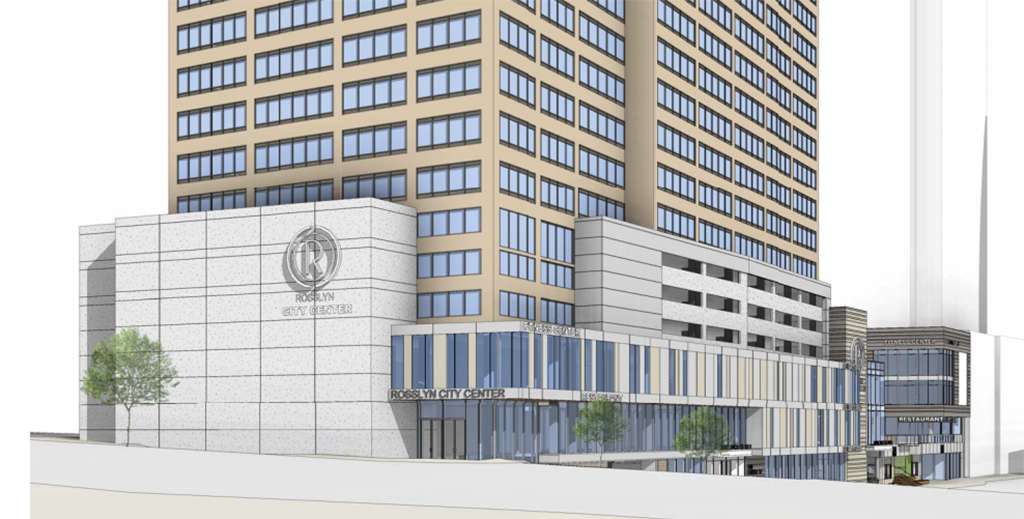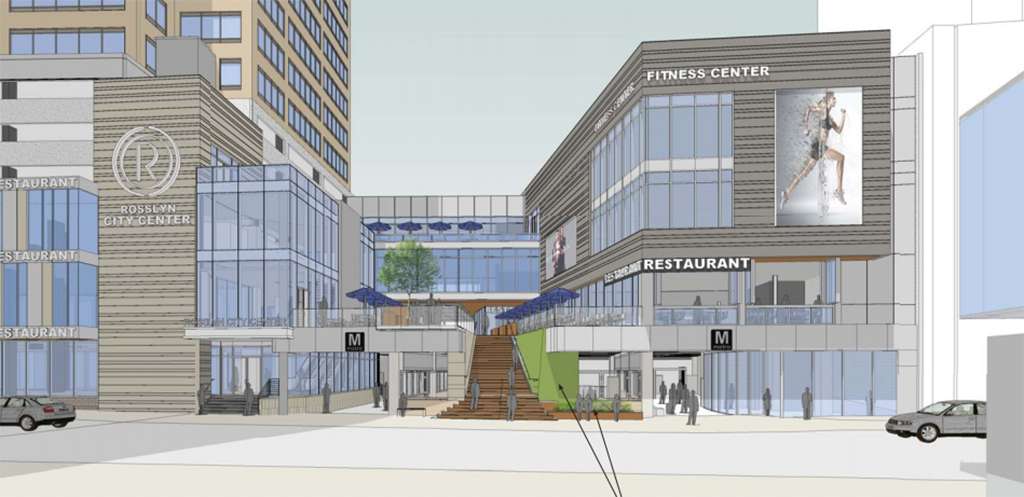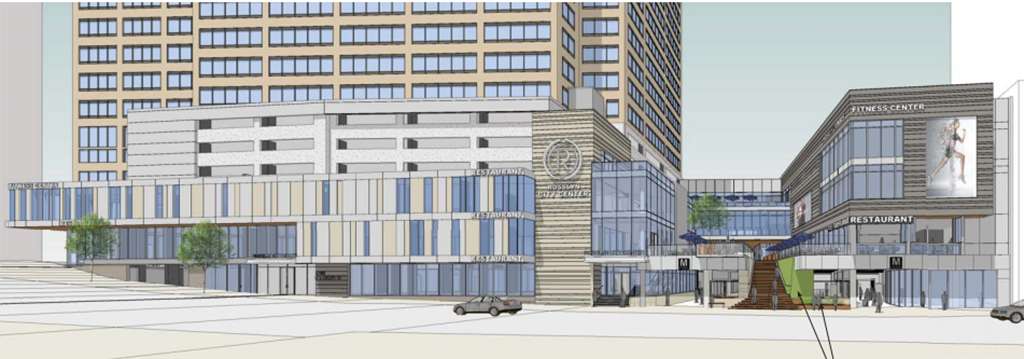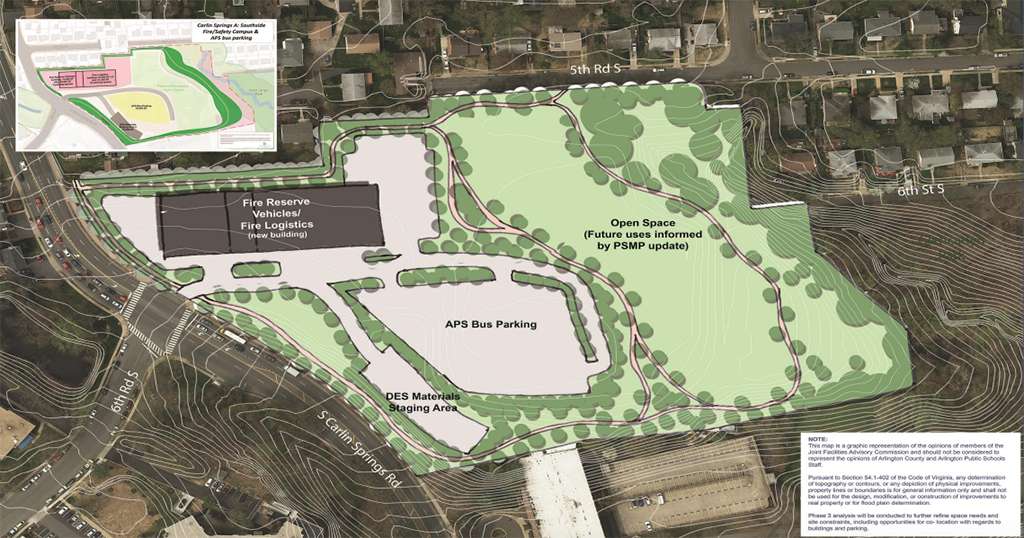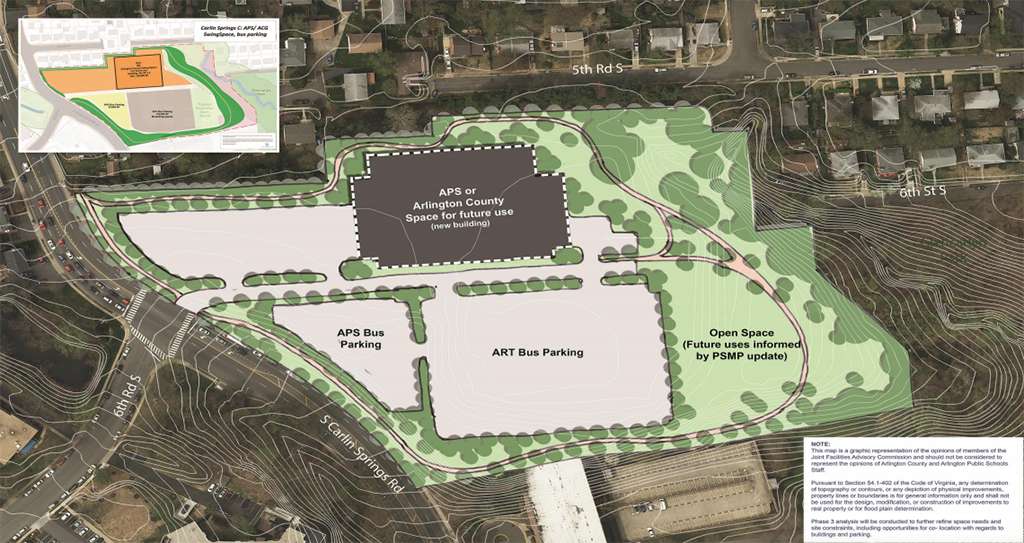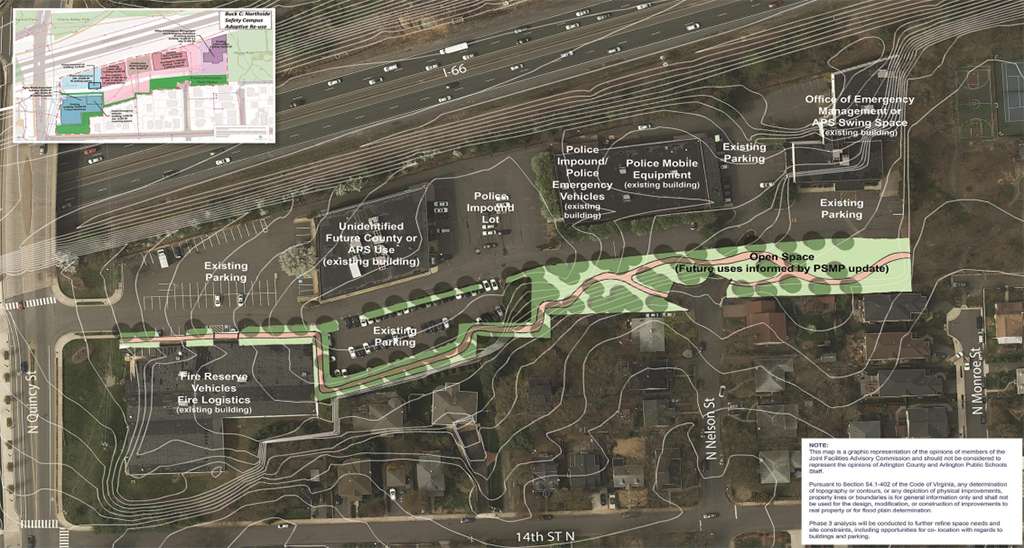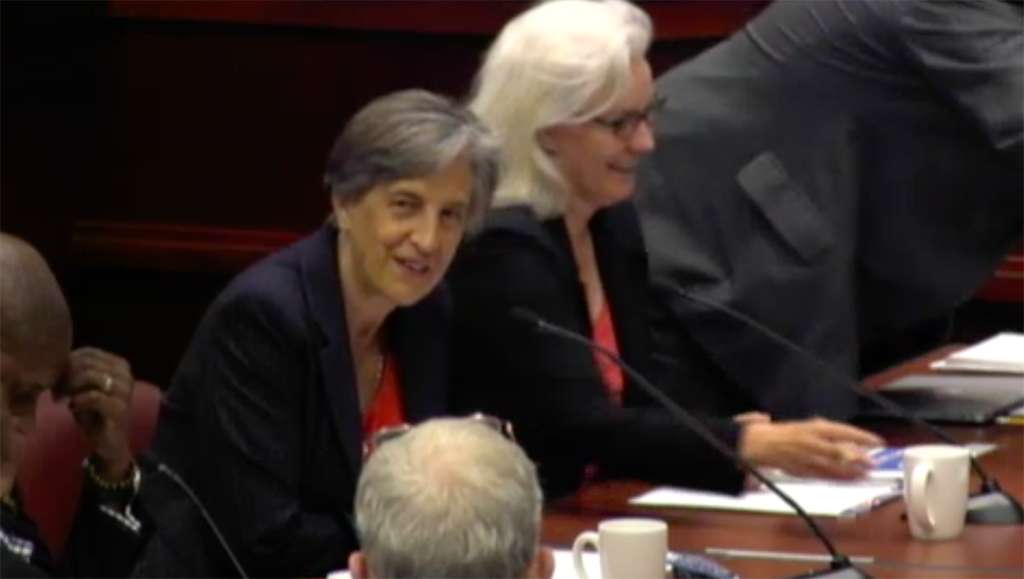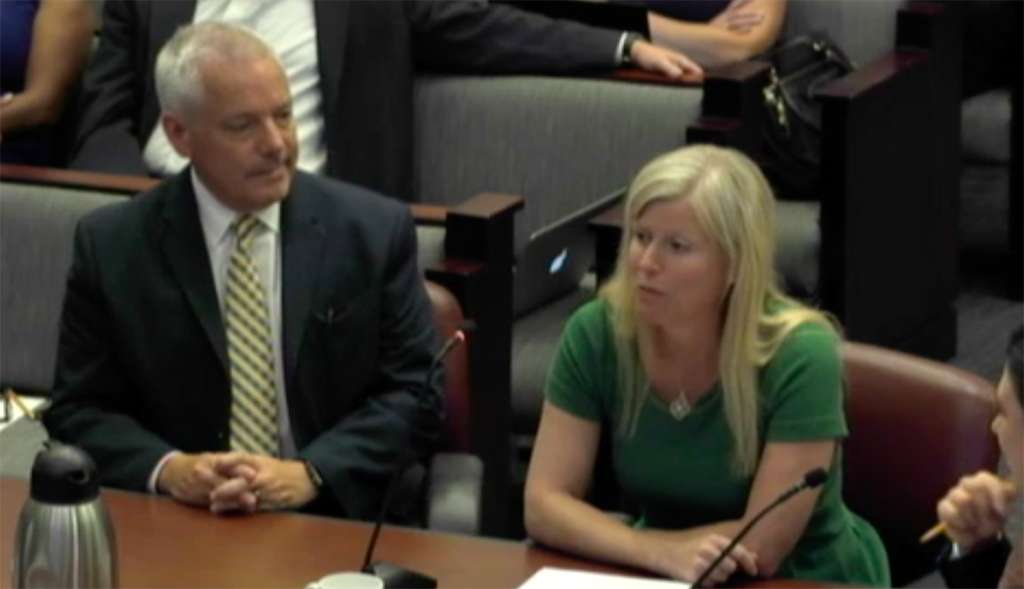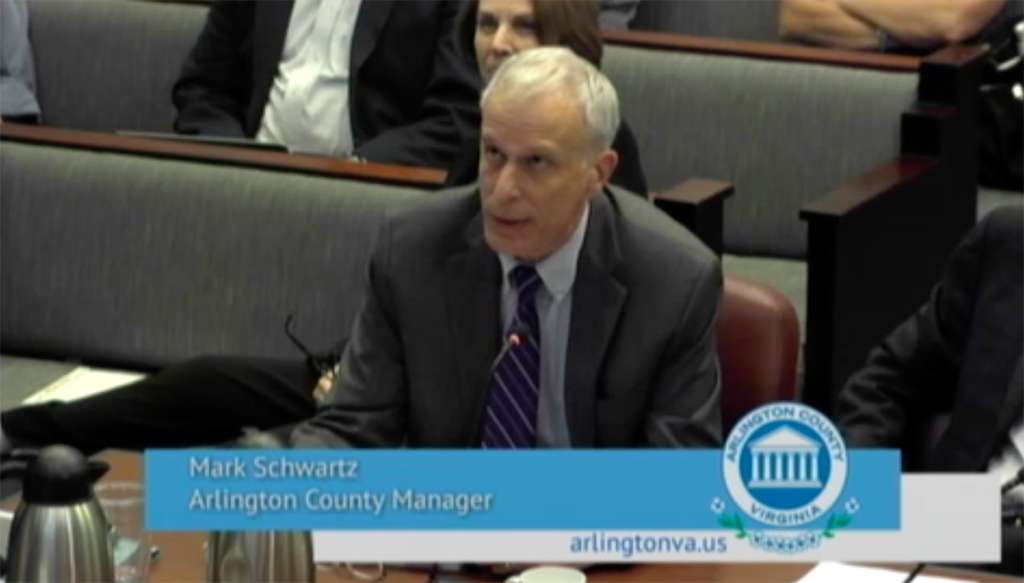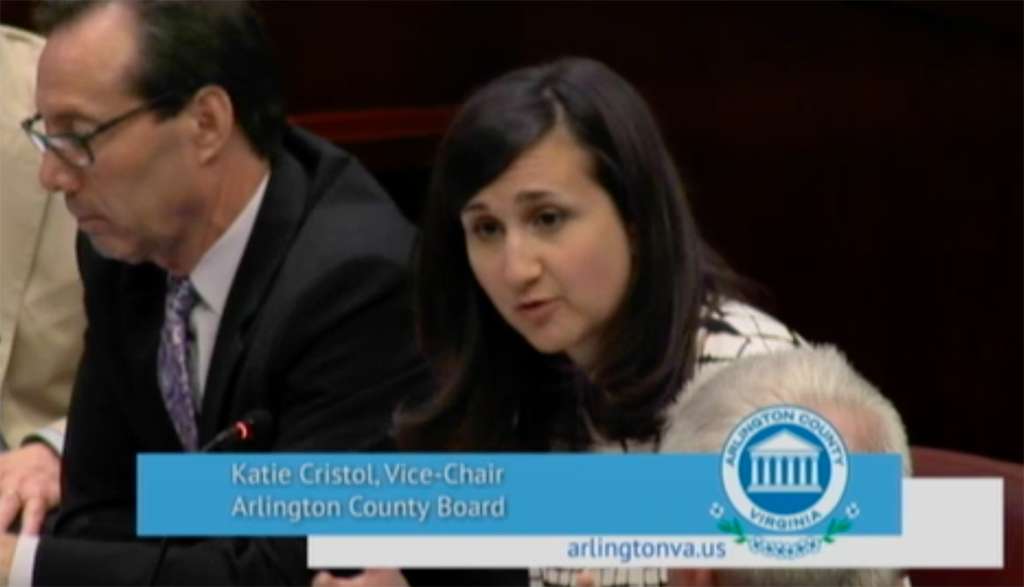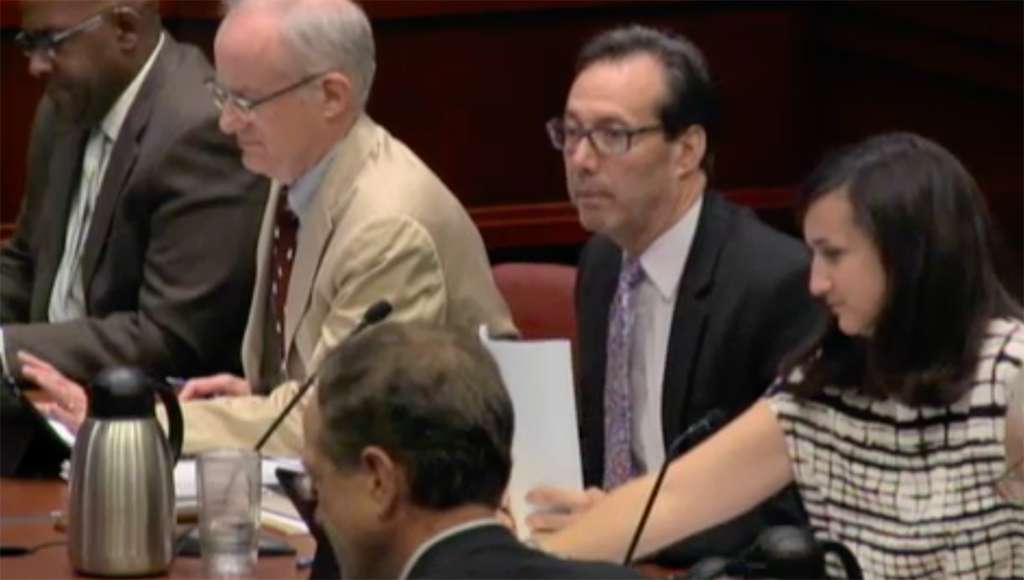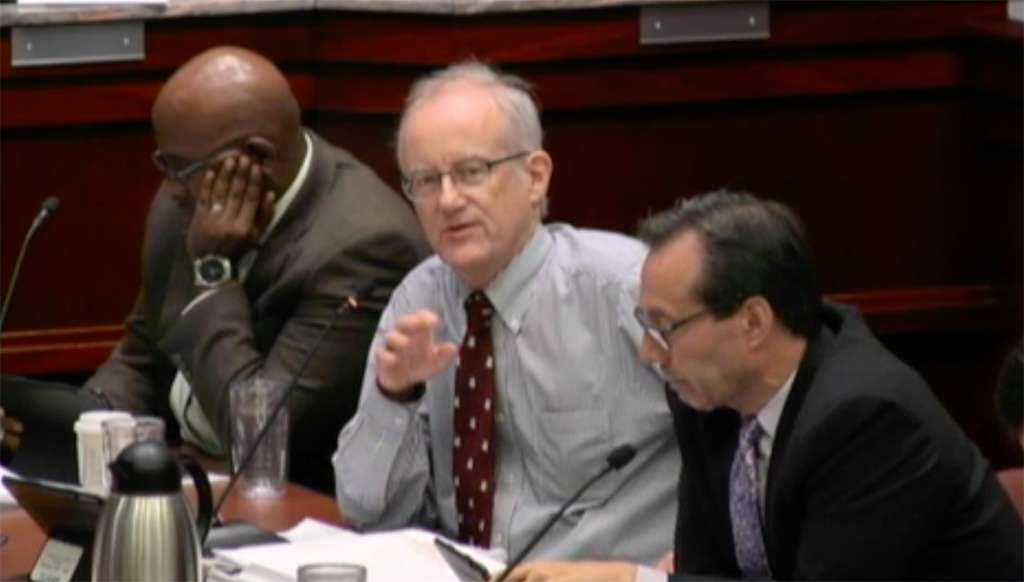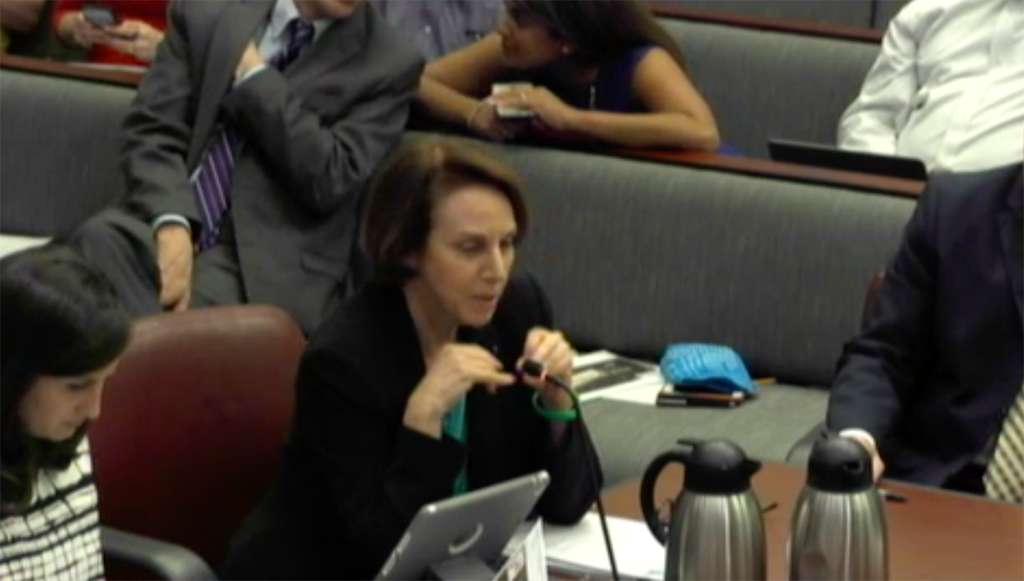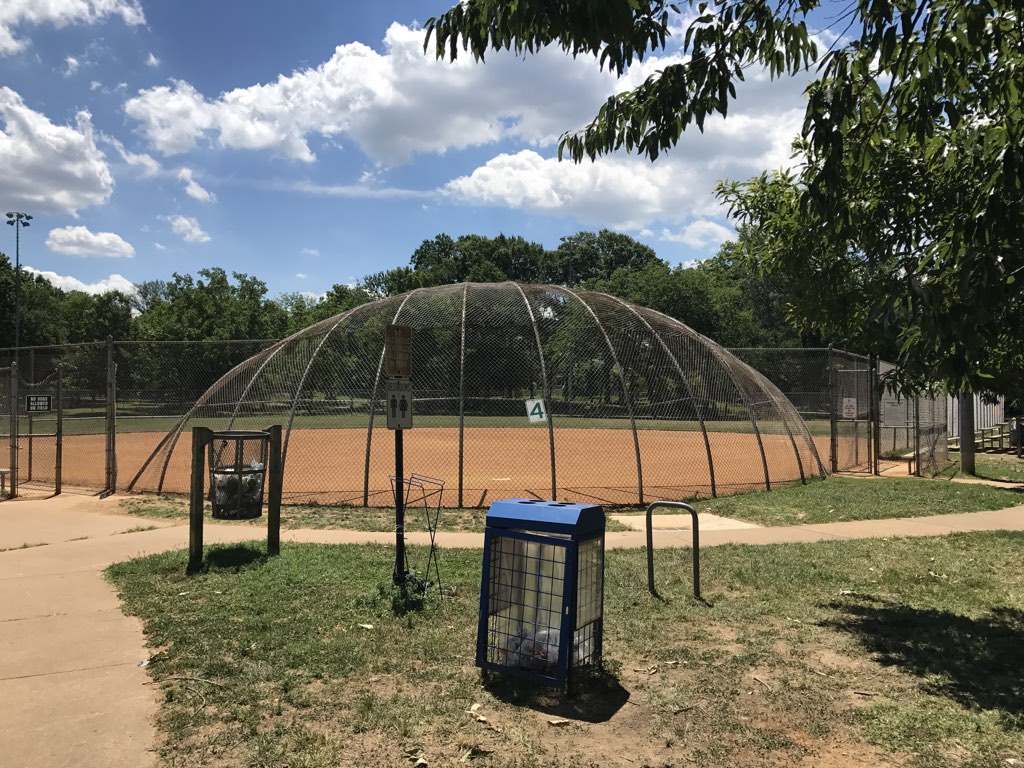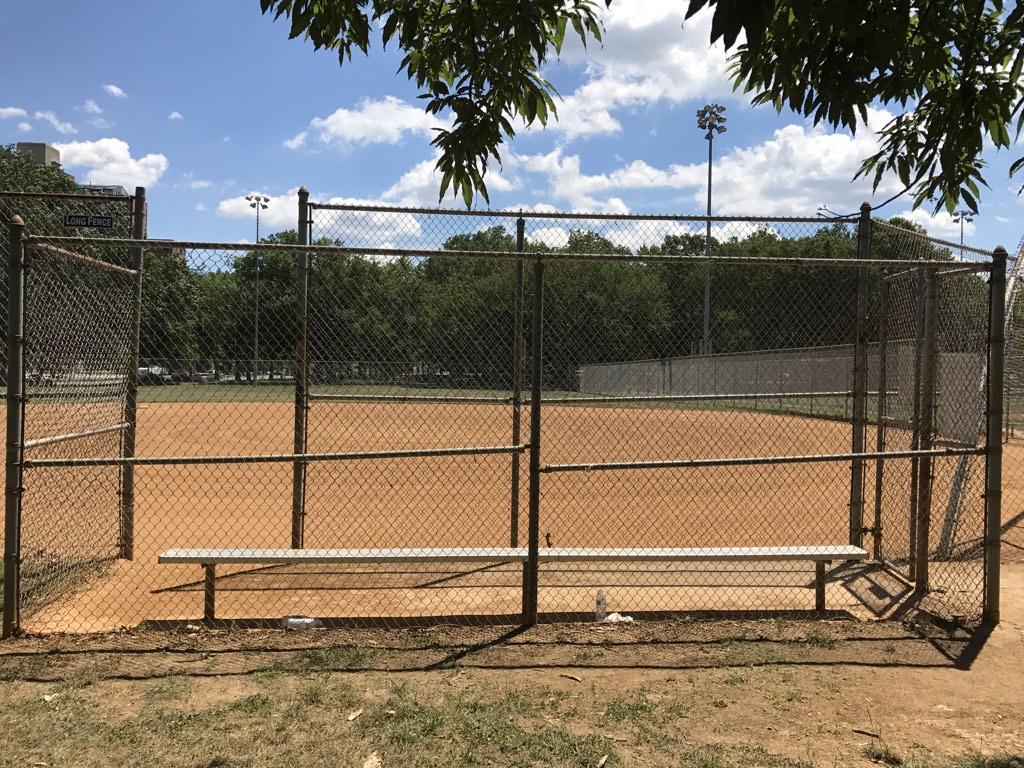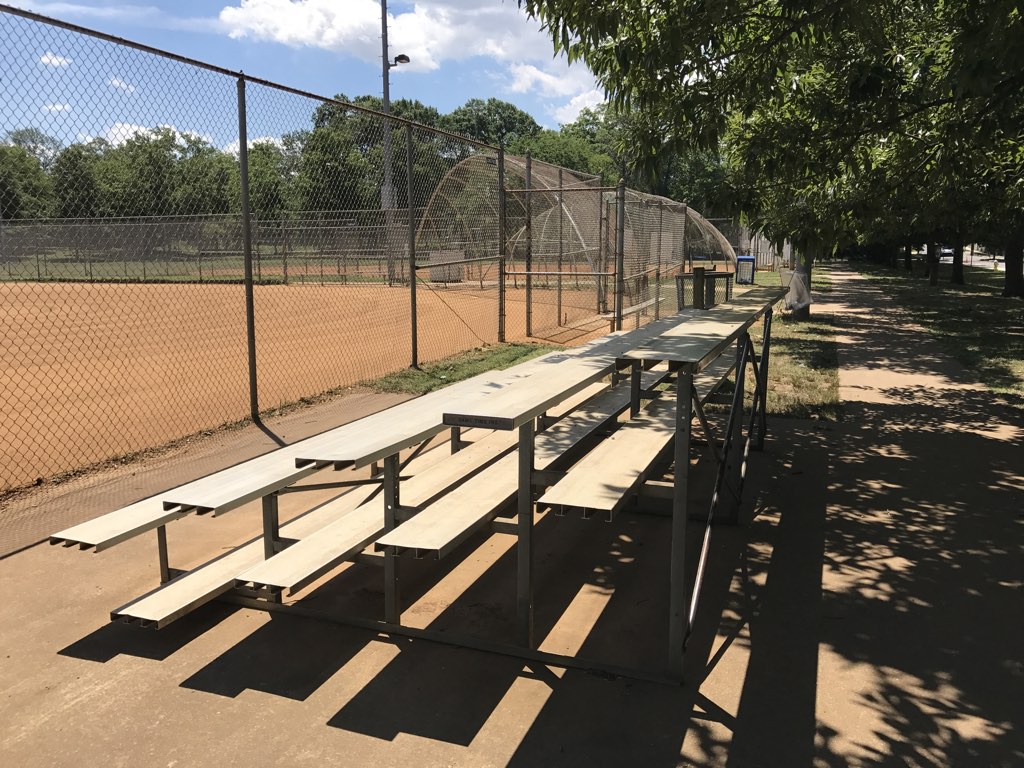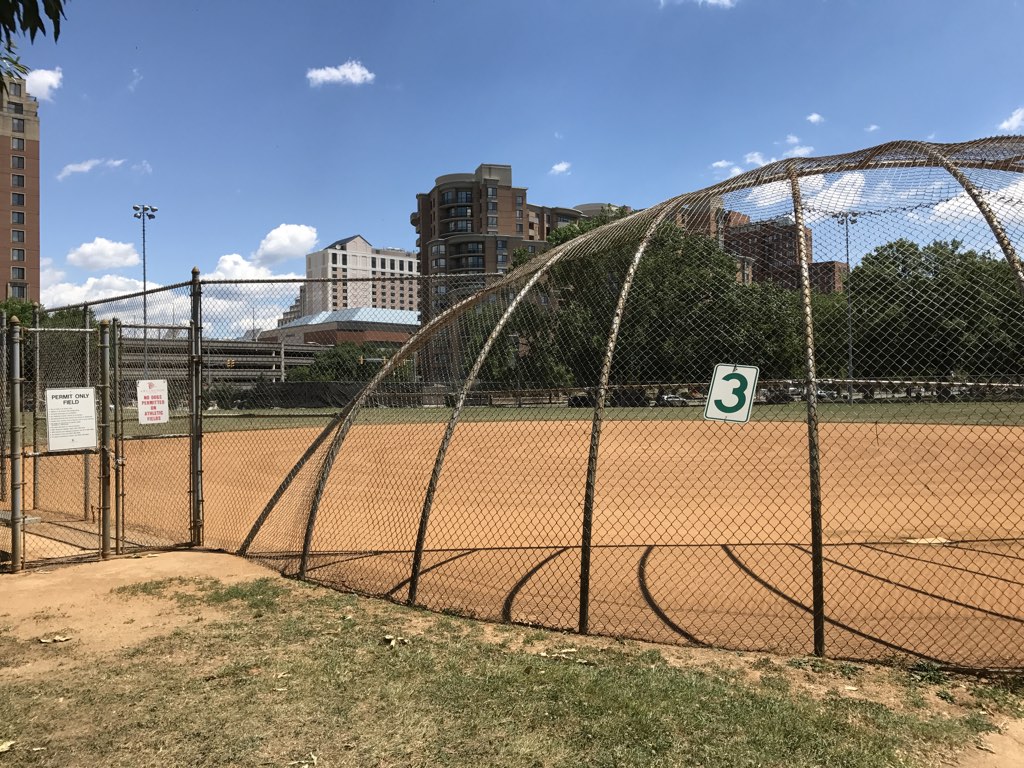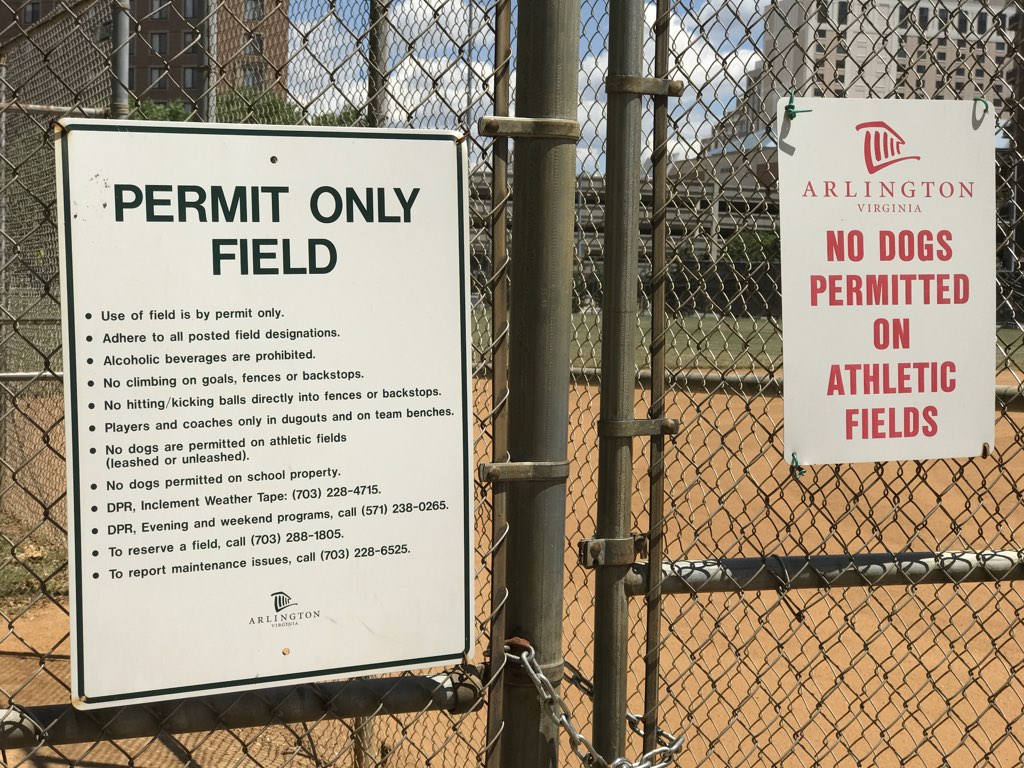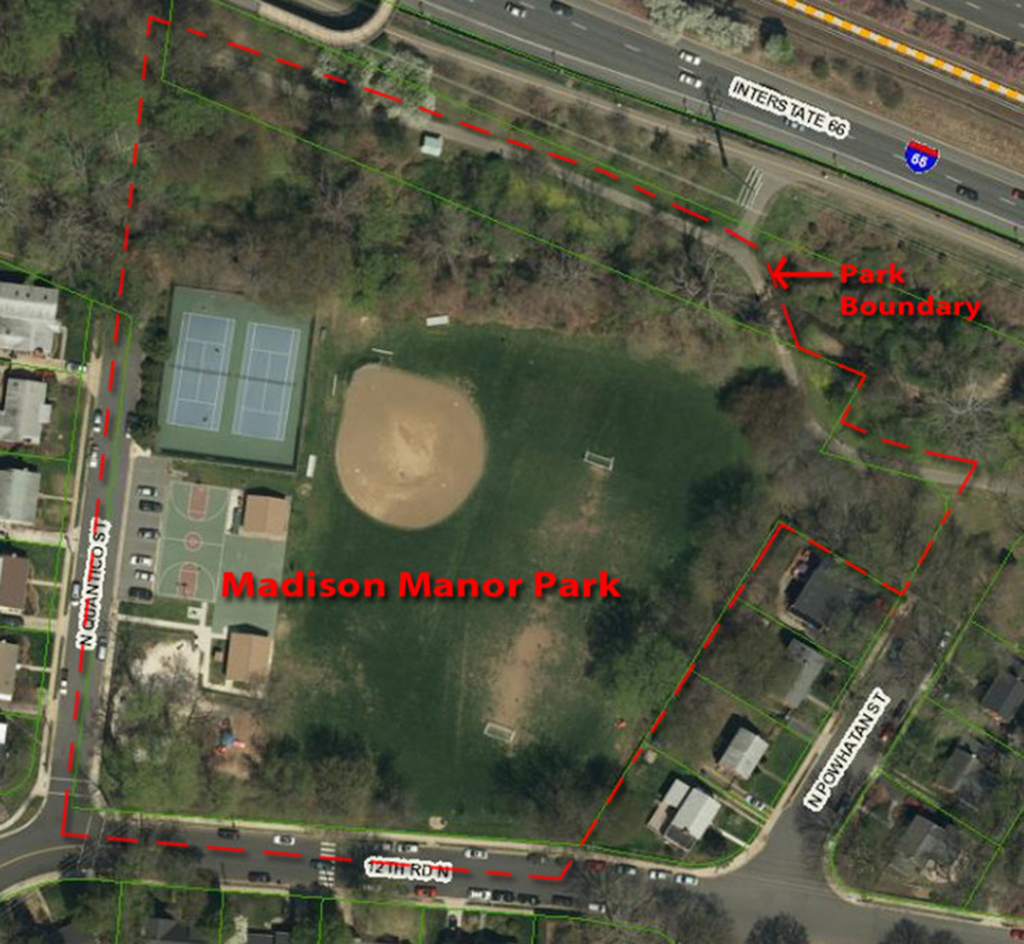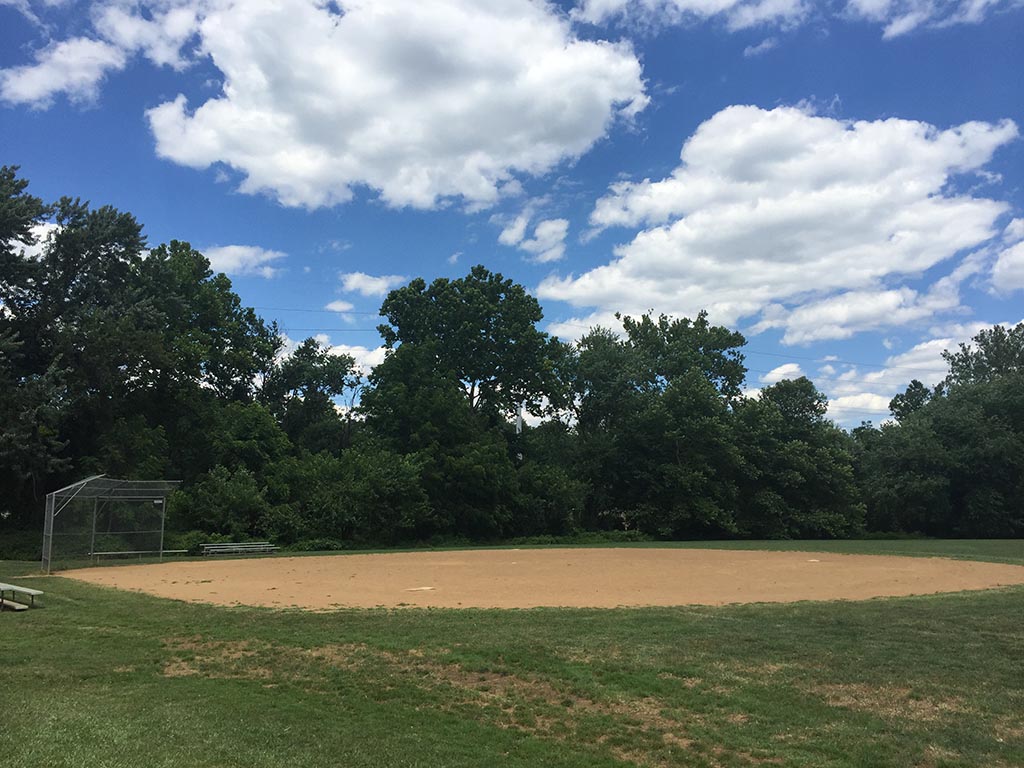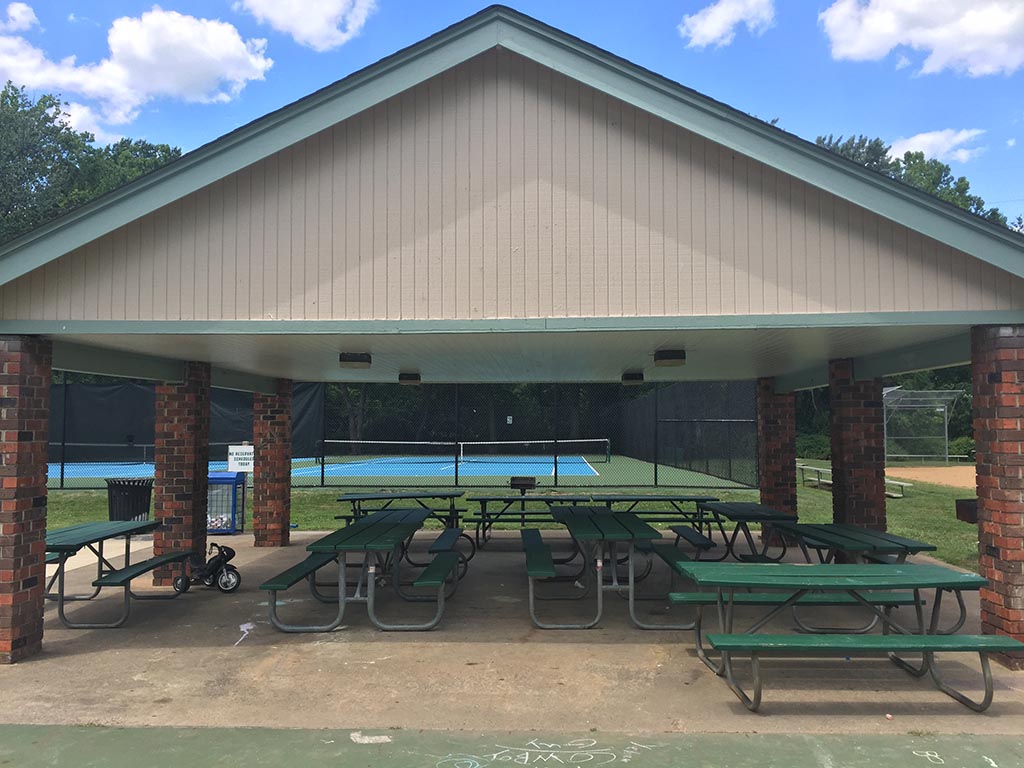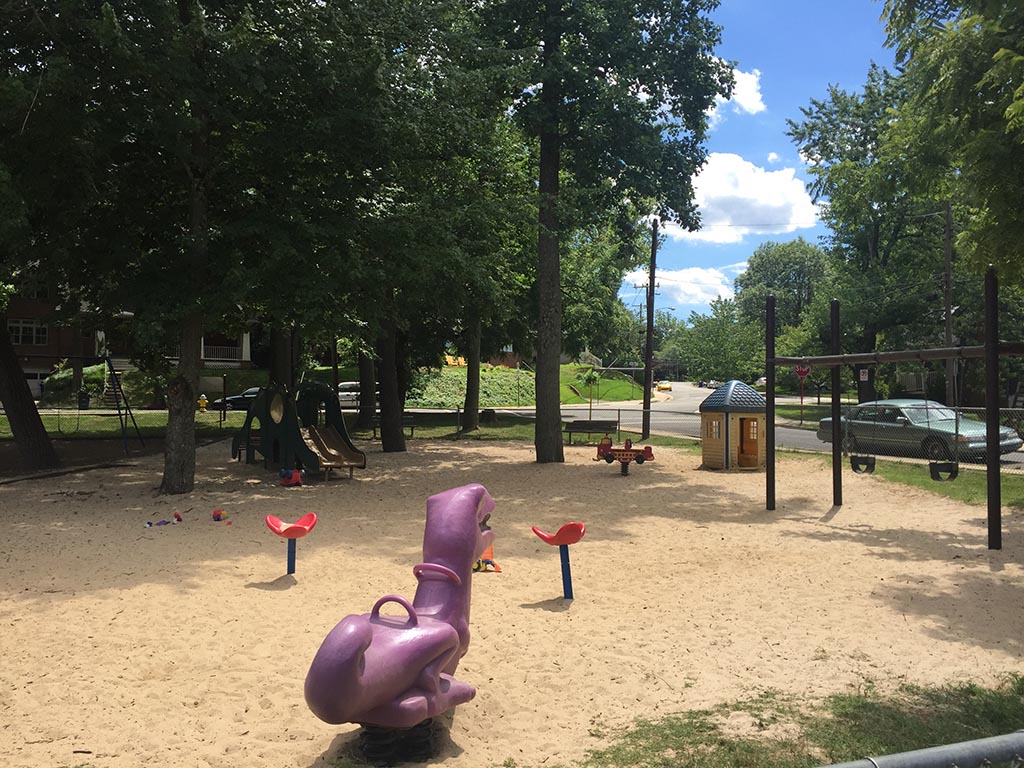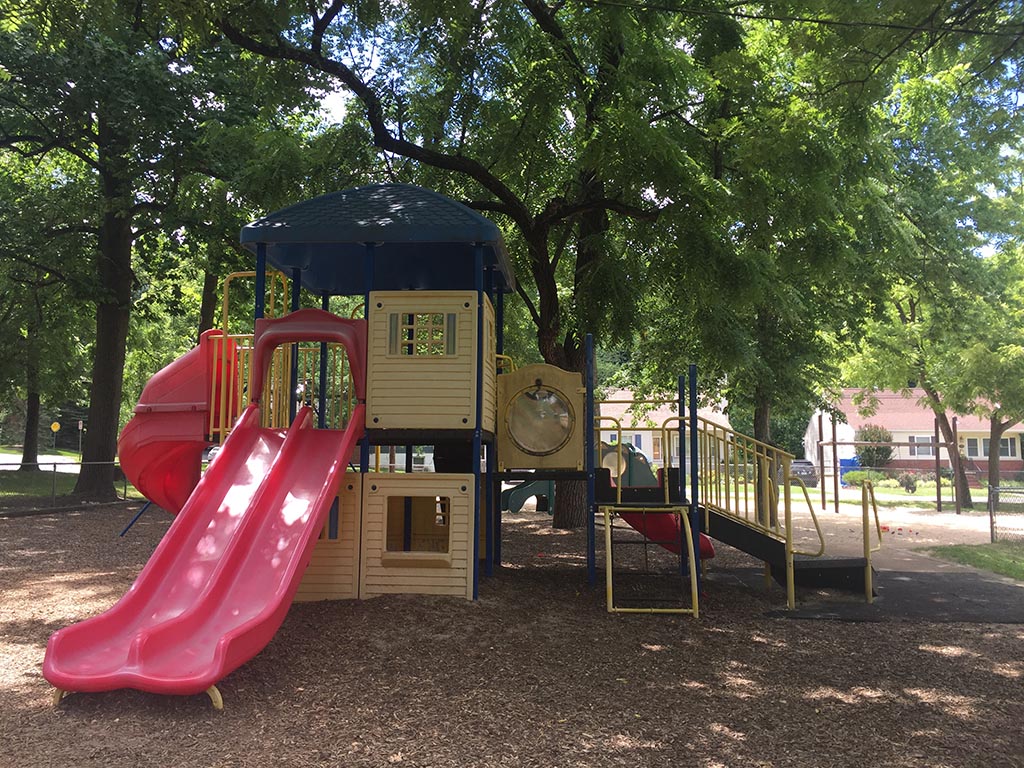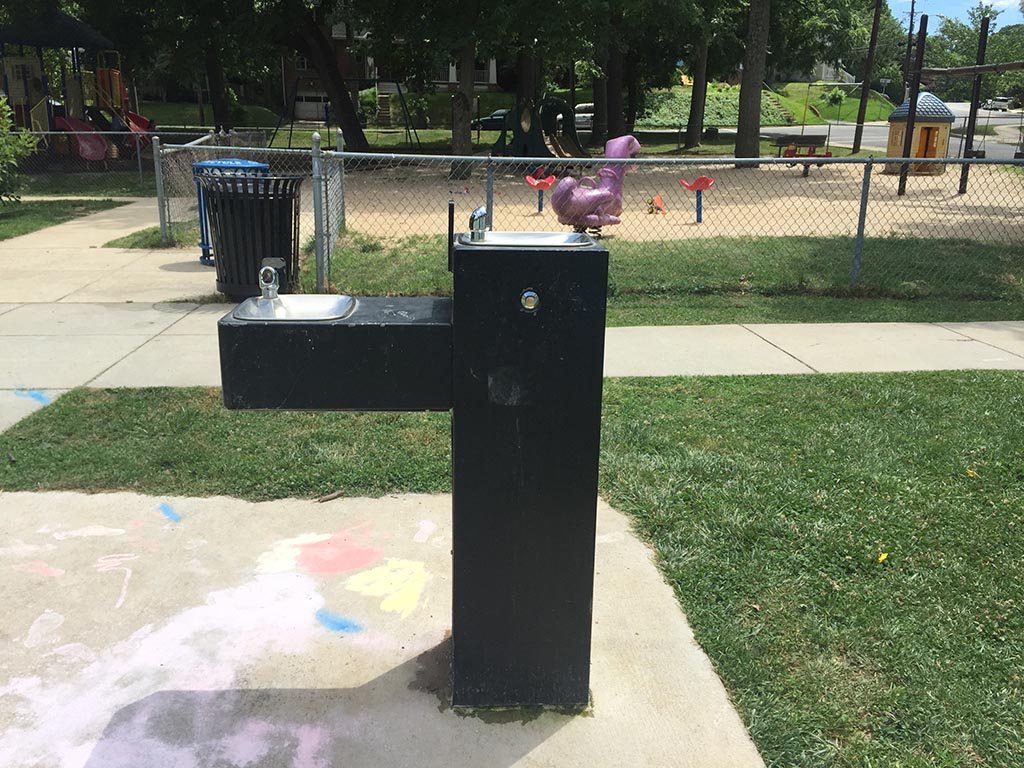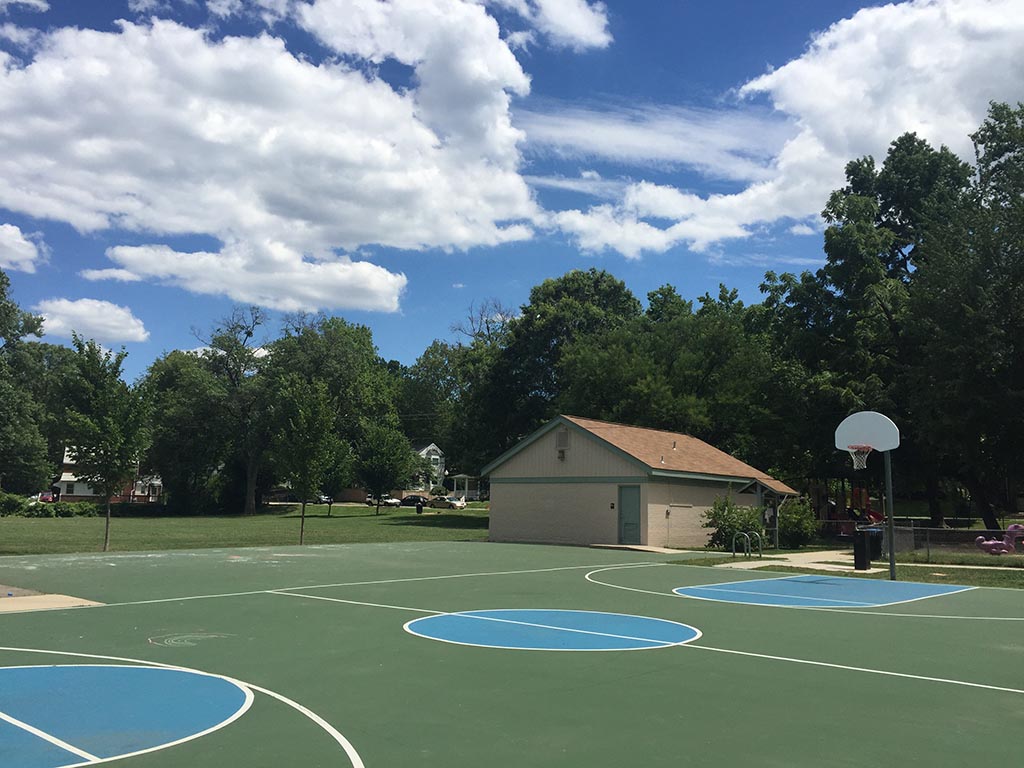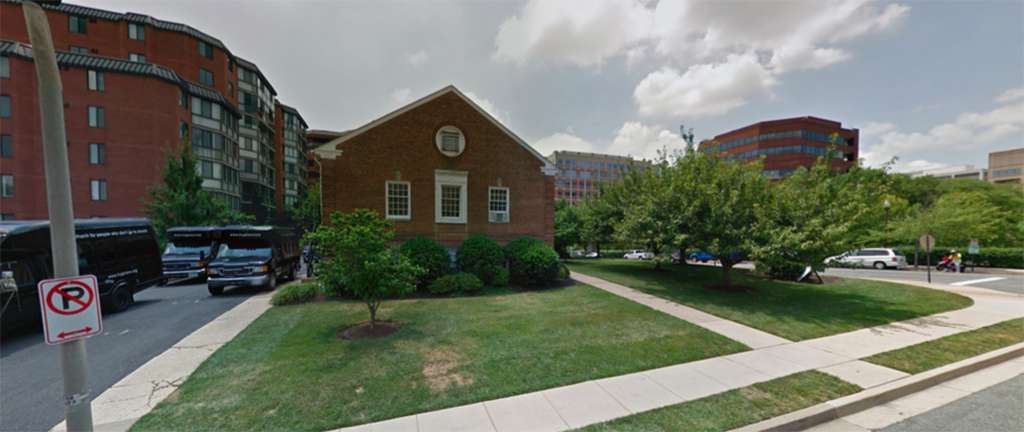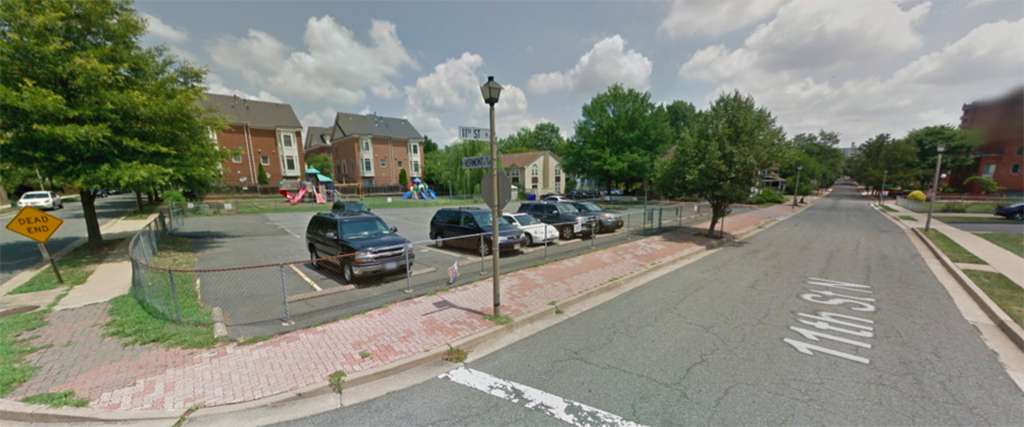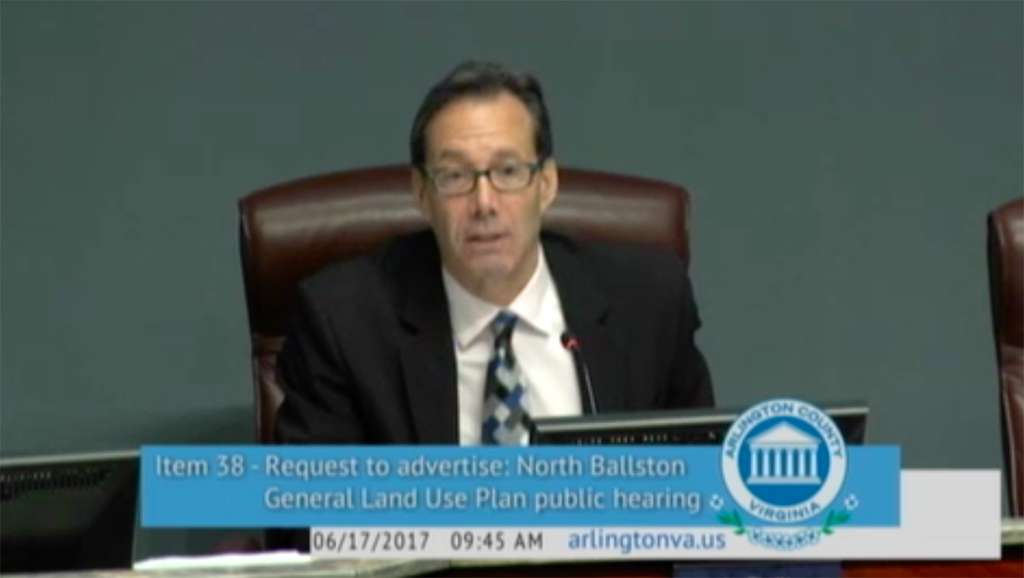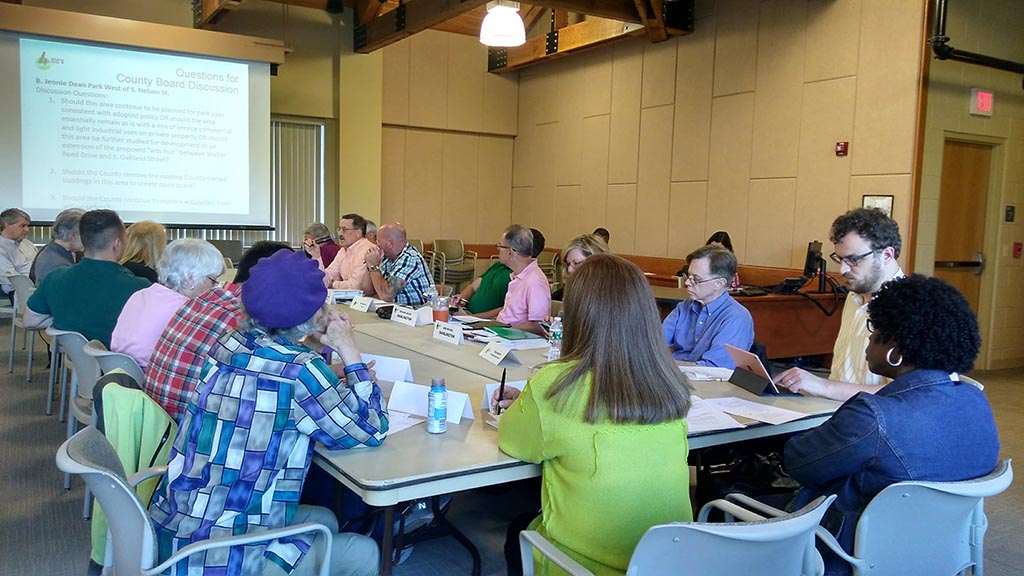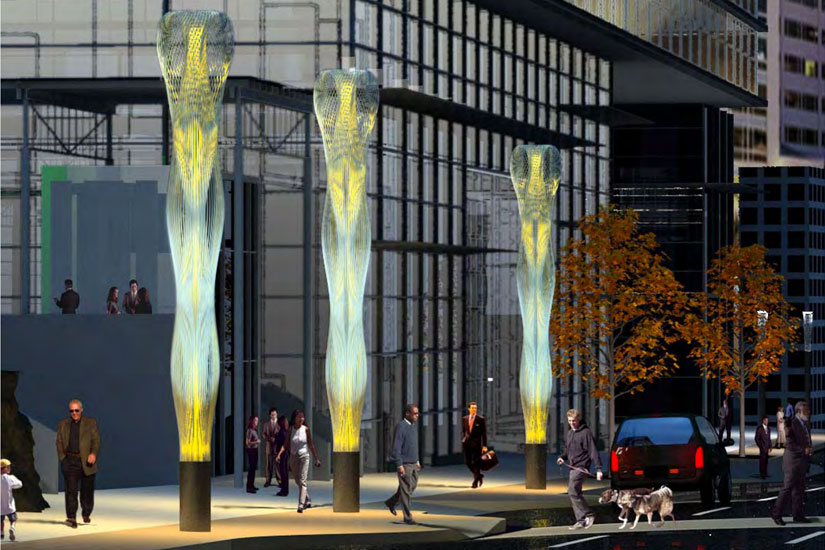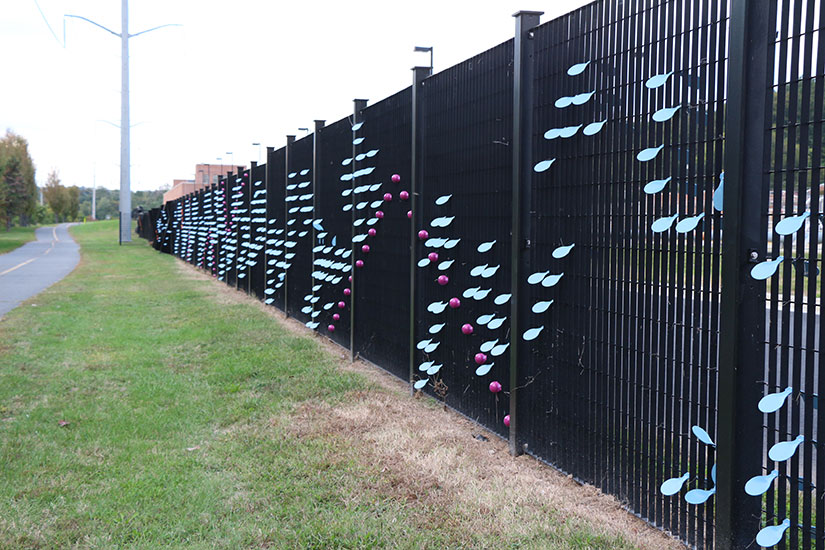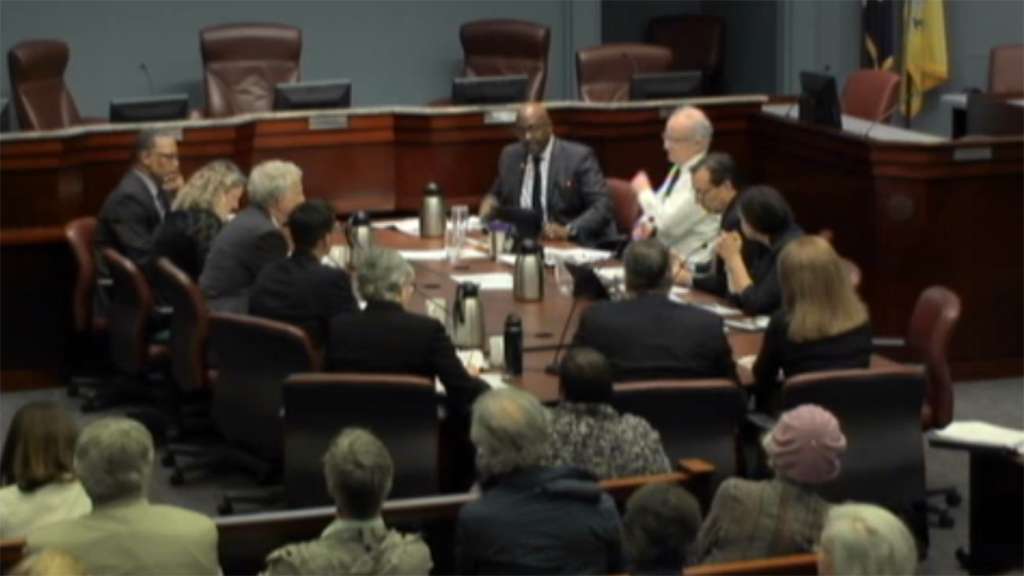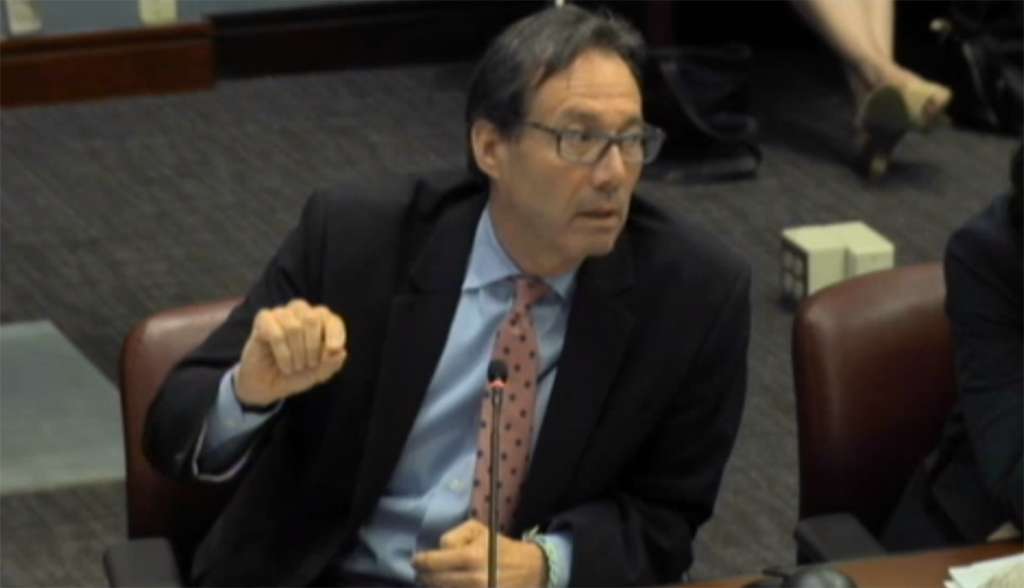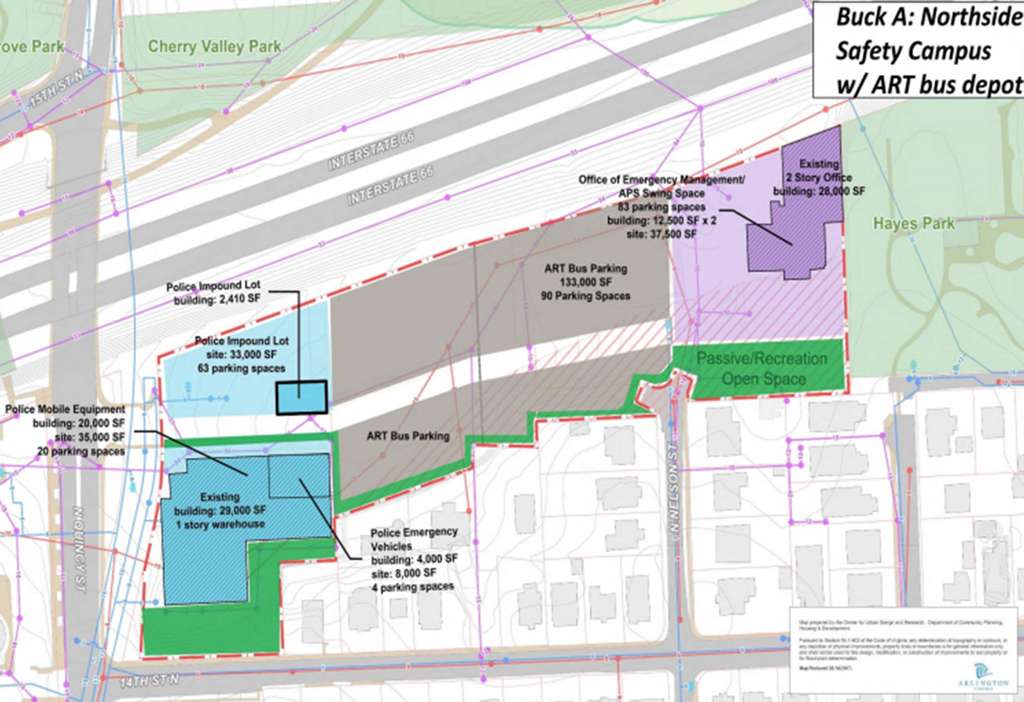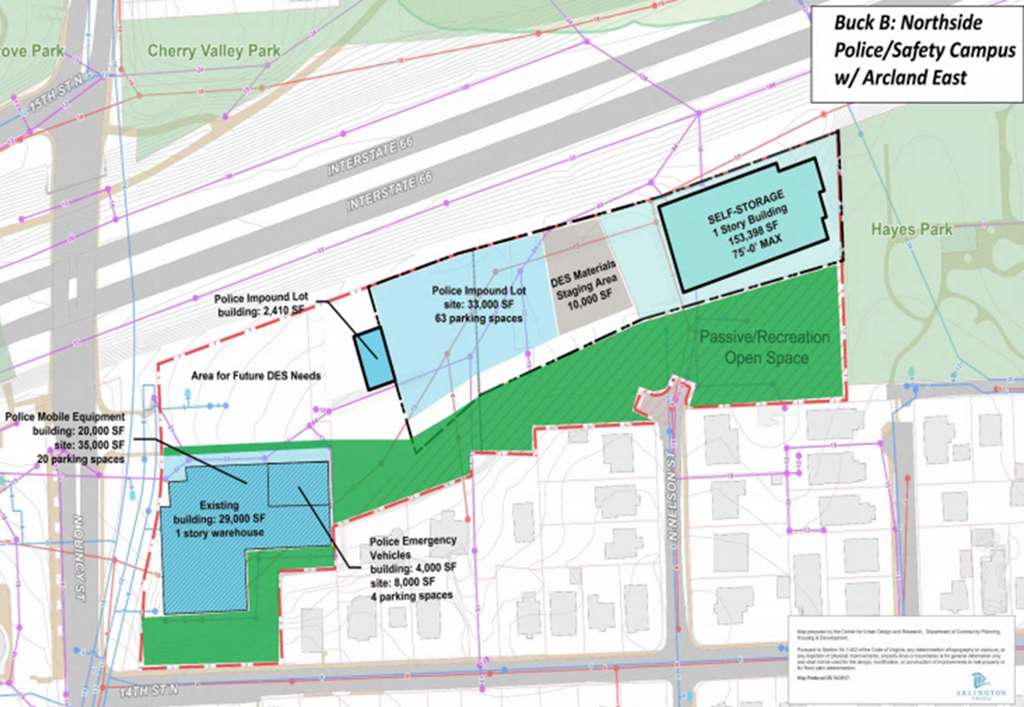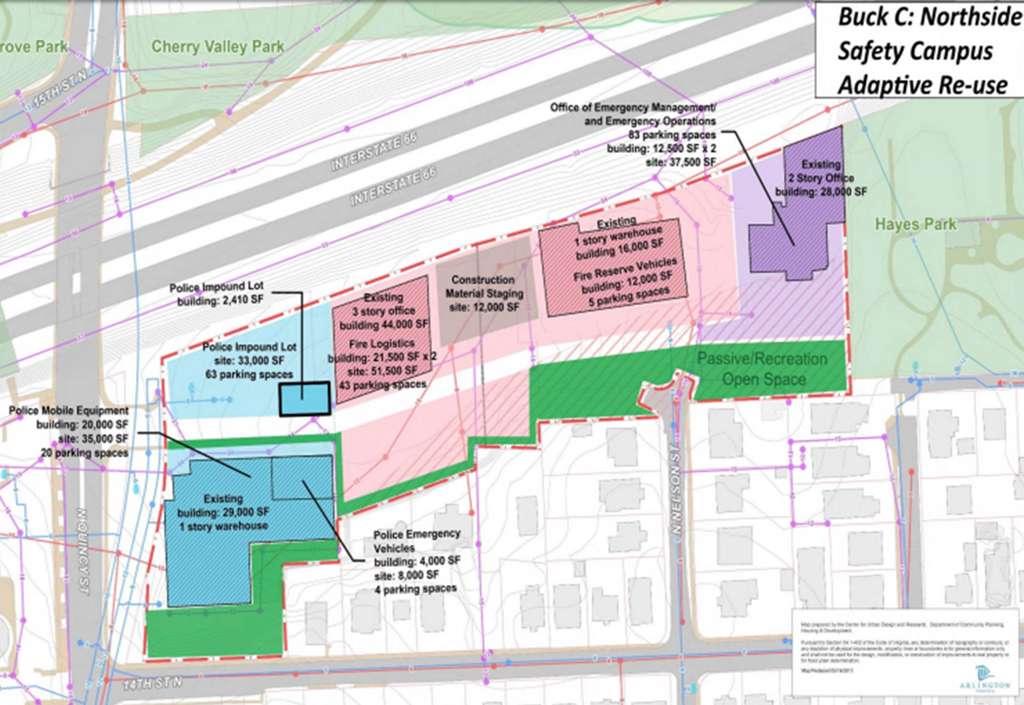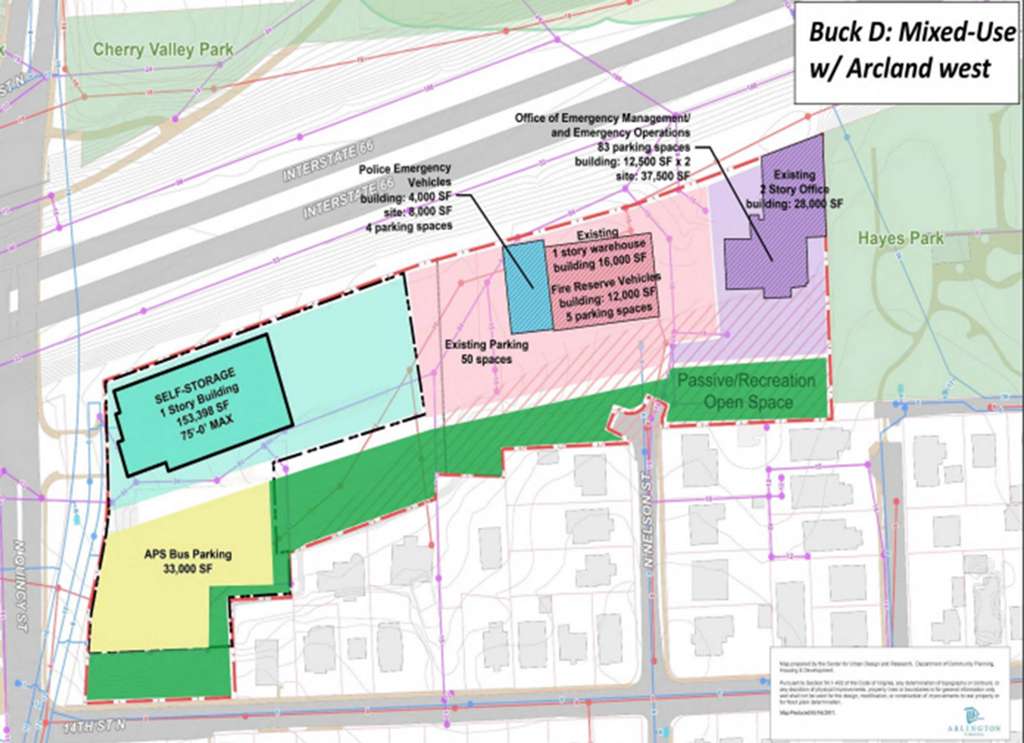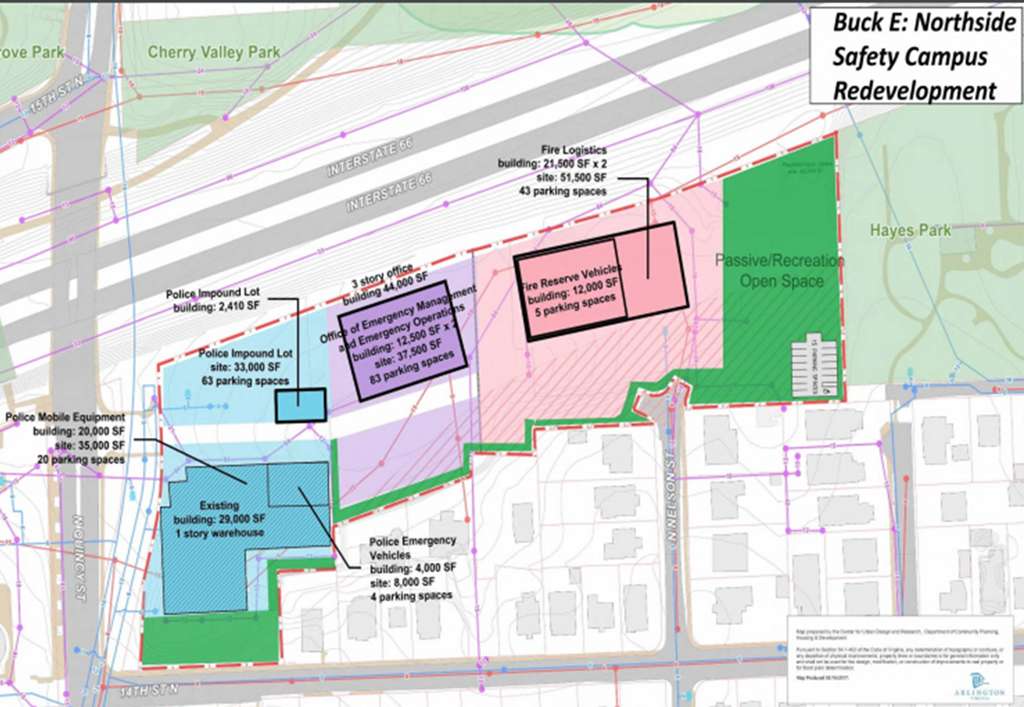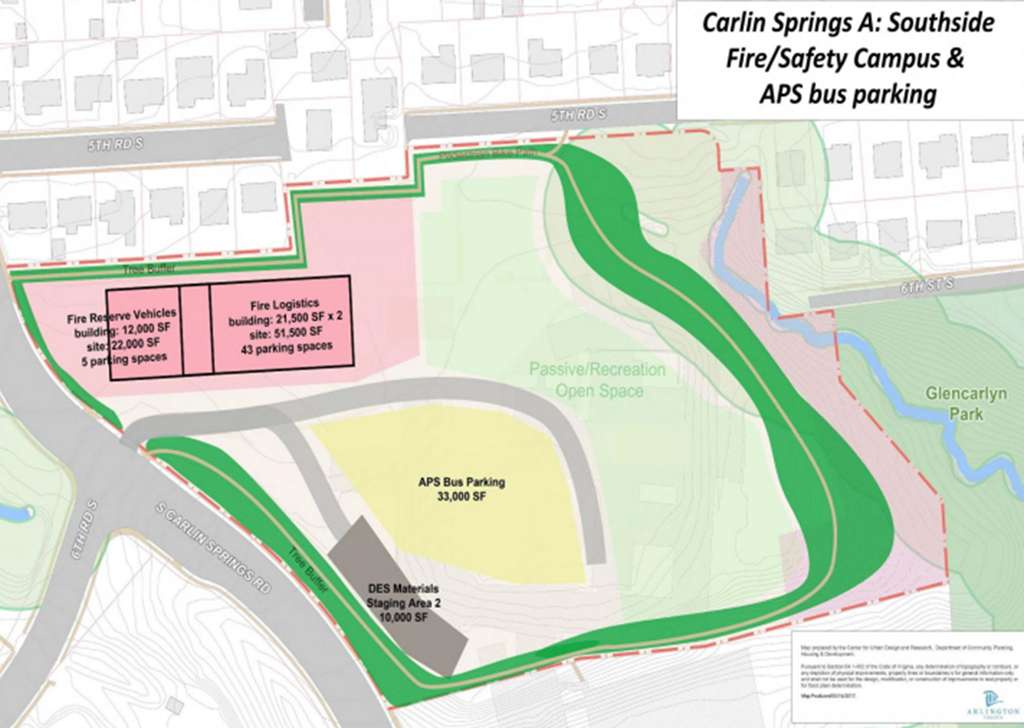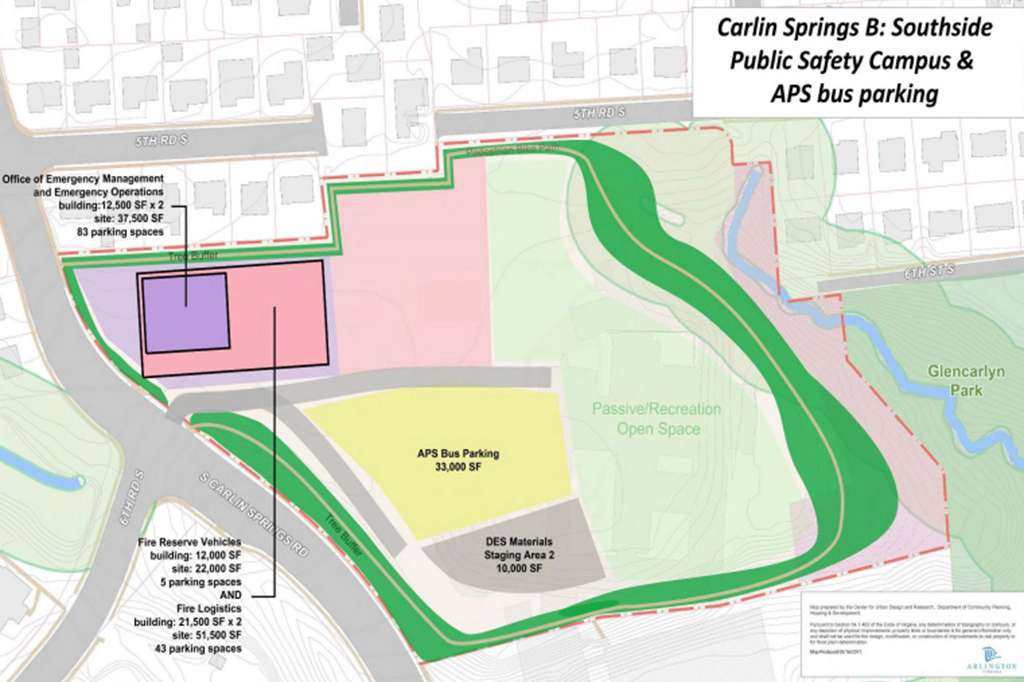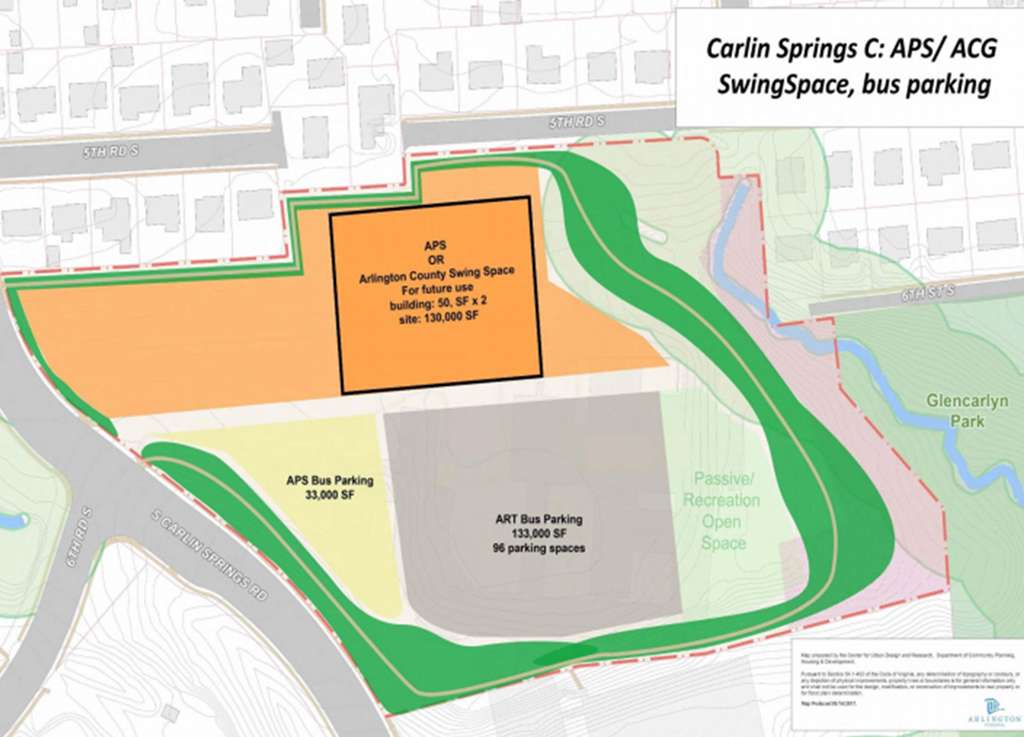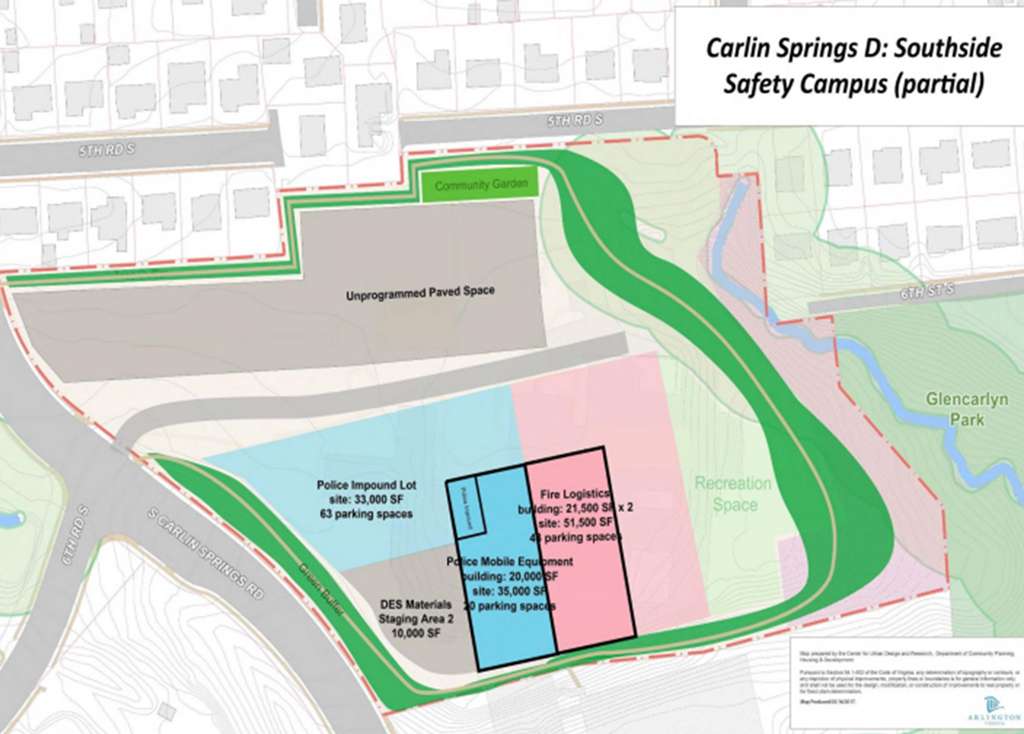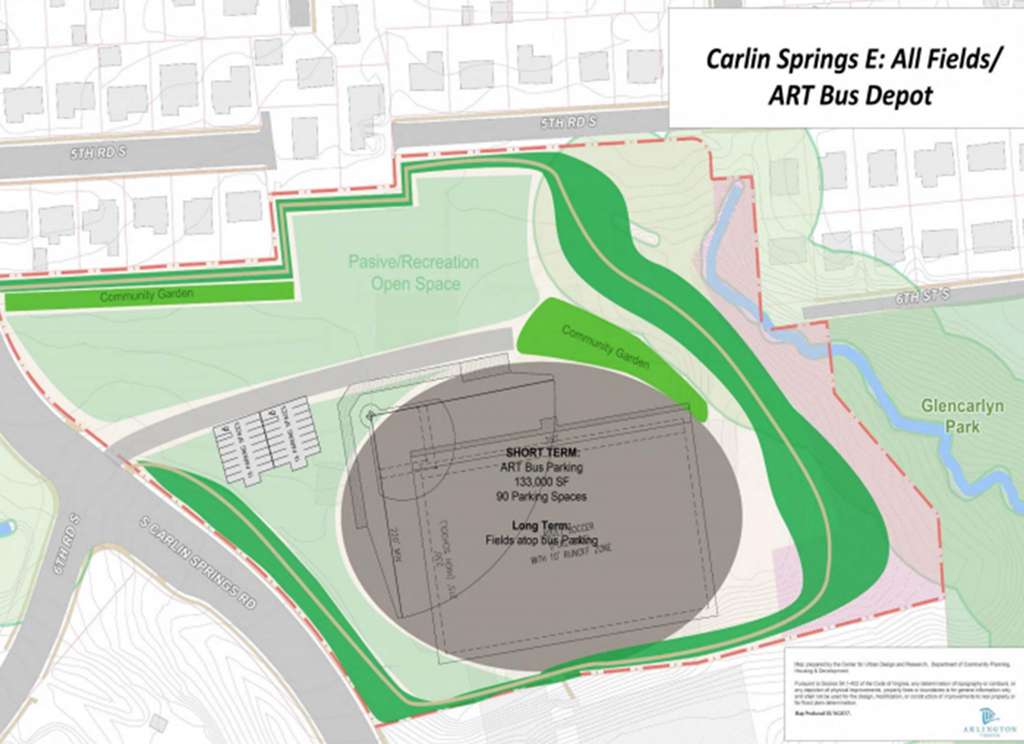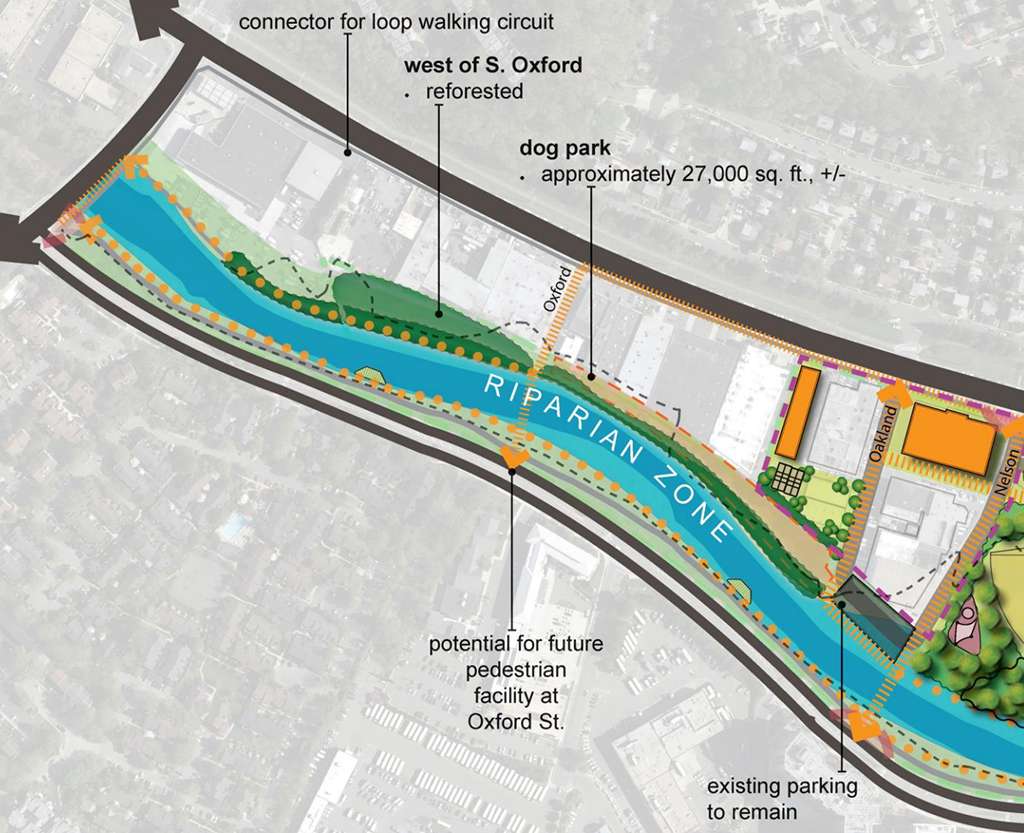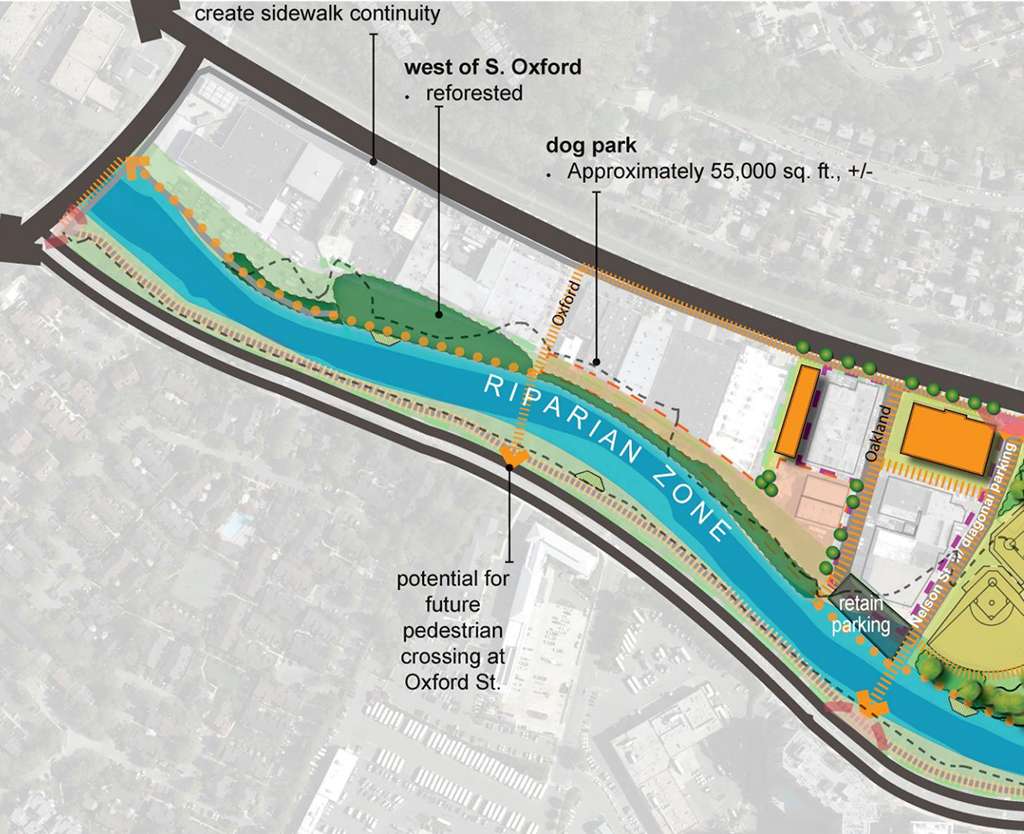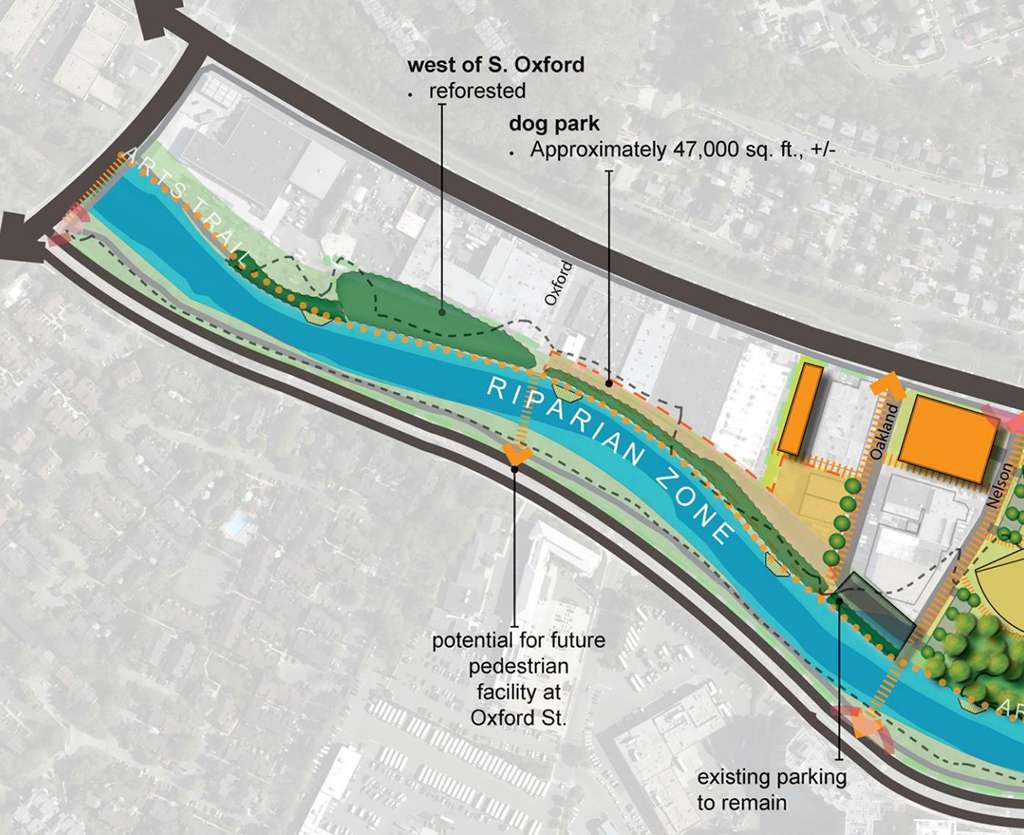(Updated at 10:20 a.m.) Homeowners could find it considerably easier to add an “accessory dwelling unit” to their property under changes set to be made to the ordinance in the fall.
Only 20 ADUs — defined as a second living space with a kitchen, a bathroom and a separate entrance — have been approved in Arlington since the ordinance first came into effect in 2009. Advocates have said they can help ease the county’s lack of affordable housing.
Staff is recommending that the Board allow detached ADUs, set back from the main house, and bump up the maximum occupancy from two to three. Currently in Arlington ADUs are only allowed within a single-family home.
At a work session Tuesday with county staff, Arlington County Board members debated various other recommendations, focusing in on a few.
Board members discussed staff’s recommendation of maintaining the current cap of ADU approvals at 28 a year countywide. Chair Jay Fisette and member Christian Dorsey suggested removing the cap altogether.
“Even at the likely installation rates, we’re not talking about a big impact on our community,” said Dorsey. “And who’s to say that if the 29th application is really the ideal, textbook accessory dwelling location and circumstance, we have to say no because we’re going to cap it? … It just really seems insane.”
But others were not so sure about removing the cap. Board member John Vihstadt suggested looking into capping new ADUs by civic association or neighborhood to prevent a concentration in one place, something others were happy to go along with in lieu of abolishing the cap altogether.
Joel Franklin, a housing planner at the county department of Community, Planning, Housing and Development, added that staff will undertake an annual survey to try and find any issues that may arise.
The Board also explored raising the maximum number of people allowed to live in an ADU. The current maximum is two, with staff recommending that be increased to three, but several wanted more work to be done to explore whether that limit could be raised further.
Vice chair Katie Cristol said consistency is key, and that it becomes difficult when “governing the number of people in a bedroom.” But Vihstadt and Fisette were not so sure, and inclined to stick with the staff recommendation.
“It’s one thing to stay one or two nights in a crowded hotel room when you’re on vacation with the kids or friends or whatever,” Vihstadt said. “It’s another thing to have that crowded condition on a monthly or long-term basis.”
Staff suggested various rules for the units, including that their front doors can be on the same side as long as they do not face, and that exterior stairways must not face the street, among others.
Those rules are designed to protect the character of neighborhoods dominated by single-family homes. County staff members will continue to study the various policies governing aesthetics, they said.
“This is really a significant body of work. This is a use that I think we should be welcoming in our community while being cognizant of impacts on neighborhoods and protecting and planning against them,” said Cristol. “I would hate to lose this opportunity in any house or lot because somebody’s front door is placed in the wrong place.”
A slight change to the parking requirements for properties with ADUs has also been proposed.
Staff will compile the results of the survey on accessory dwellings this month, then finalize its recommendations. The Zoning and Housing Commissions will examine staff’s plans, with the Planning Commission and County Board expected to take final action in November.


